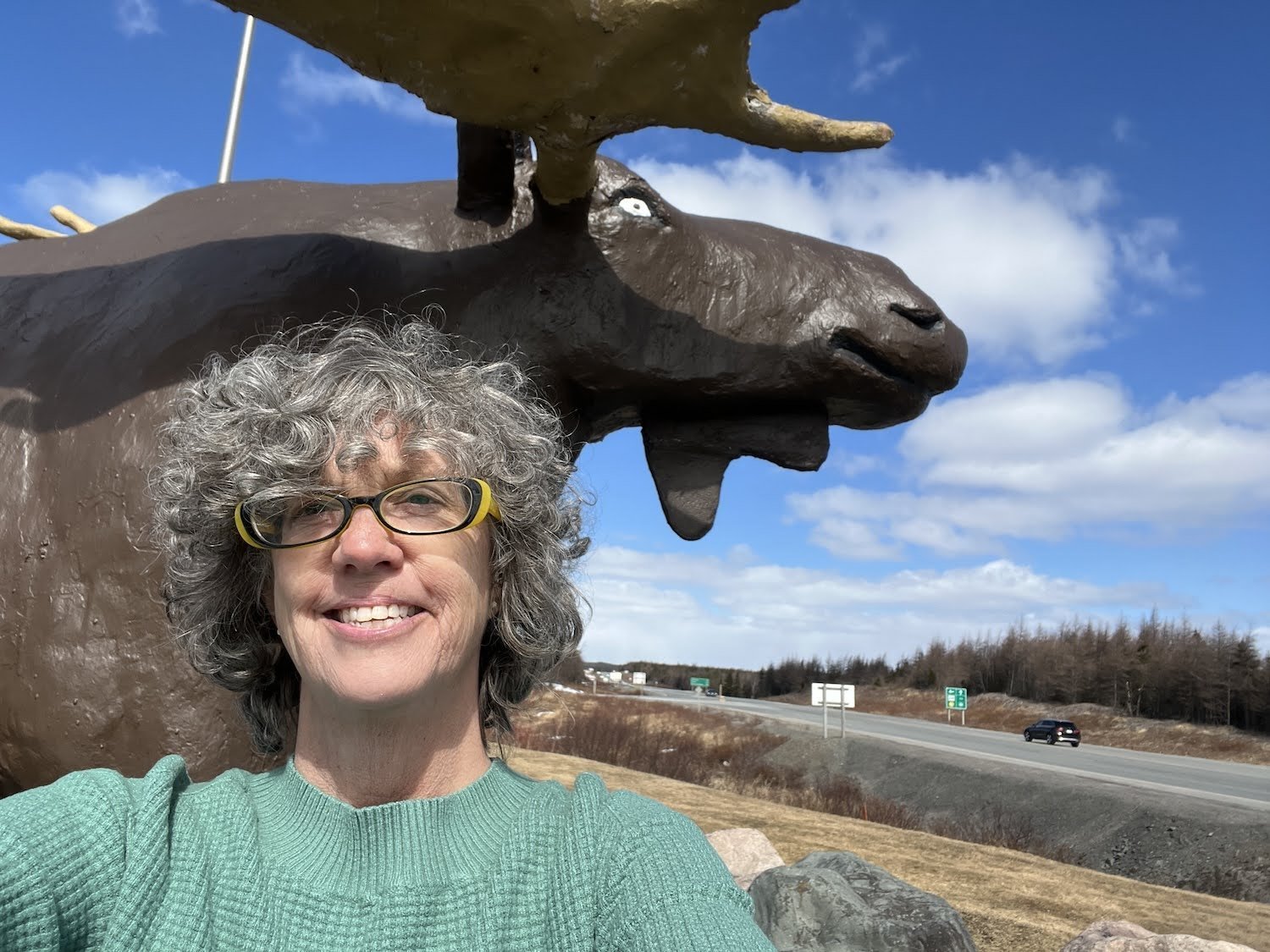Aruba Beyond the Beach
Published April 9th, 2024
Photography by Jennifer Bain unless otherwise noted.
I awake with delight to the abrasive hee-haw of donkeys braying and wander across the yard in my PJs to say good morning with carrots and apples.
It’s my first time at an Airbnb, but this one — “Bed in Aruban Countryside” — boasts donkeys, turtles and cats in the quiet town of Savaneta across from the Hong Bo Minimart. It’s run by Desiree Eldering who lives in the main house, rents out four apartments and happens to be the managing director of Donkey Sanctuary Aruba.
Six donkeys — some who kick and bite and others who need extra TLC — live here with Eldering. Another 128 live at the sanctuary.
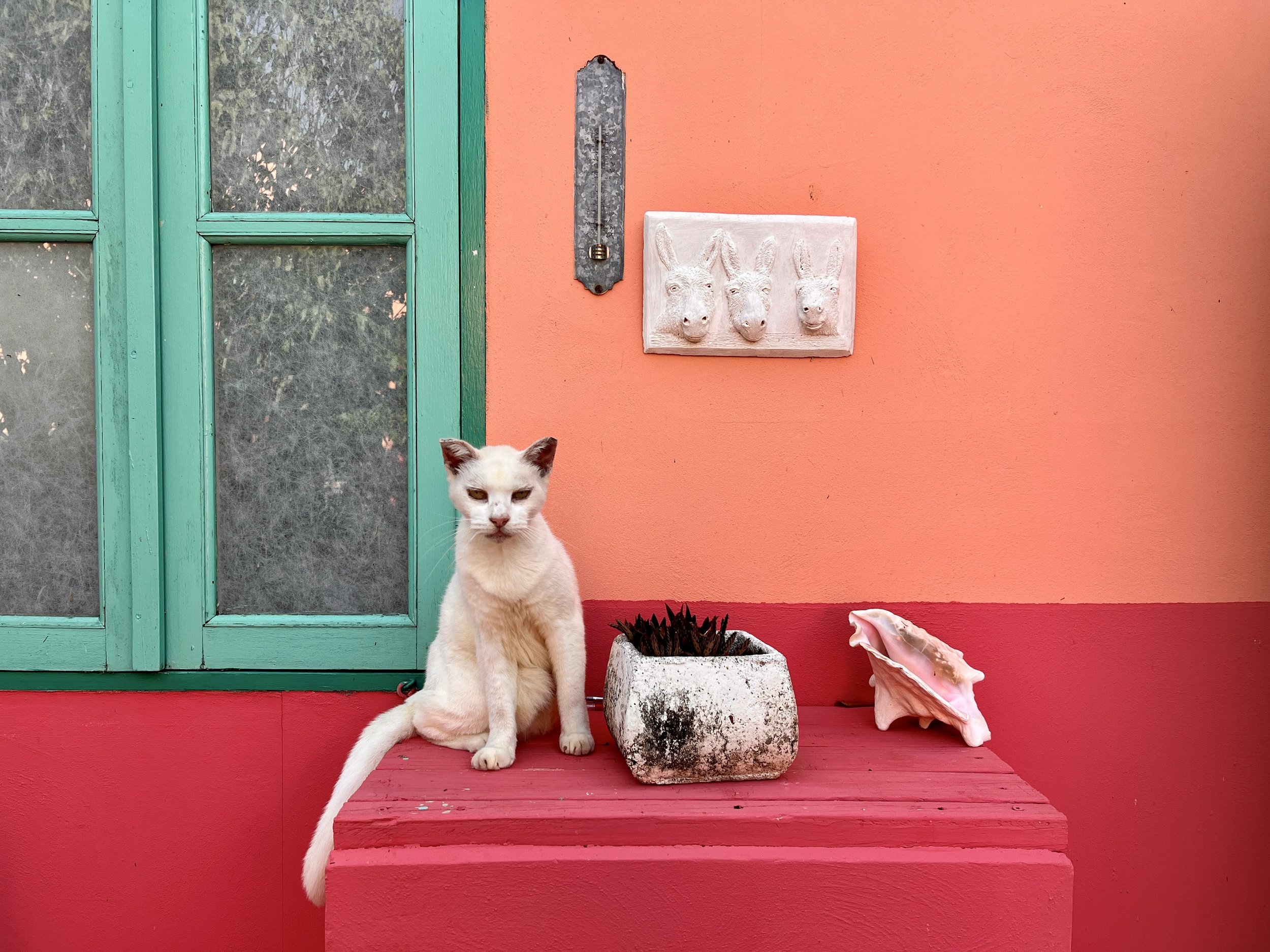
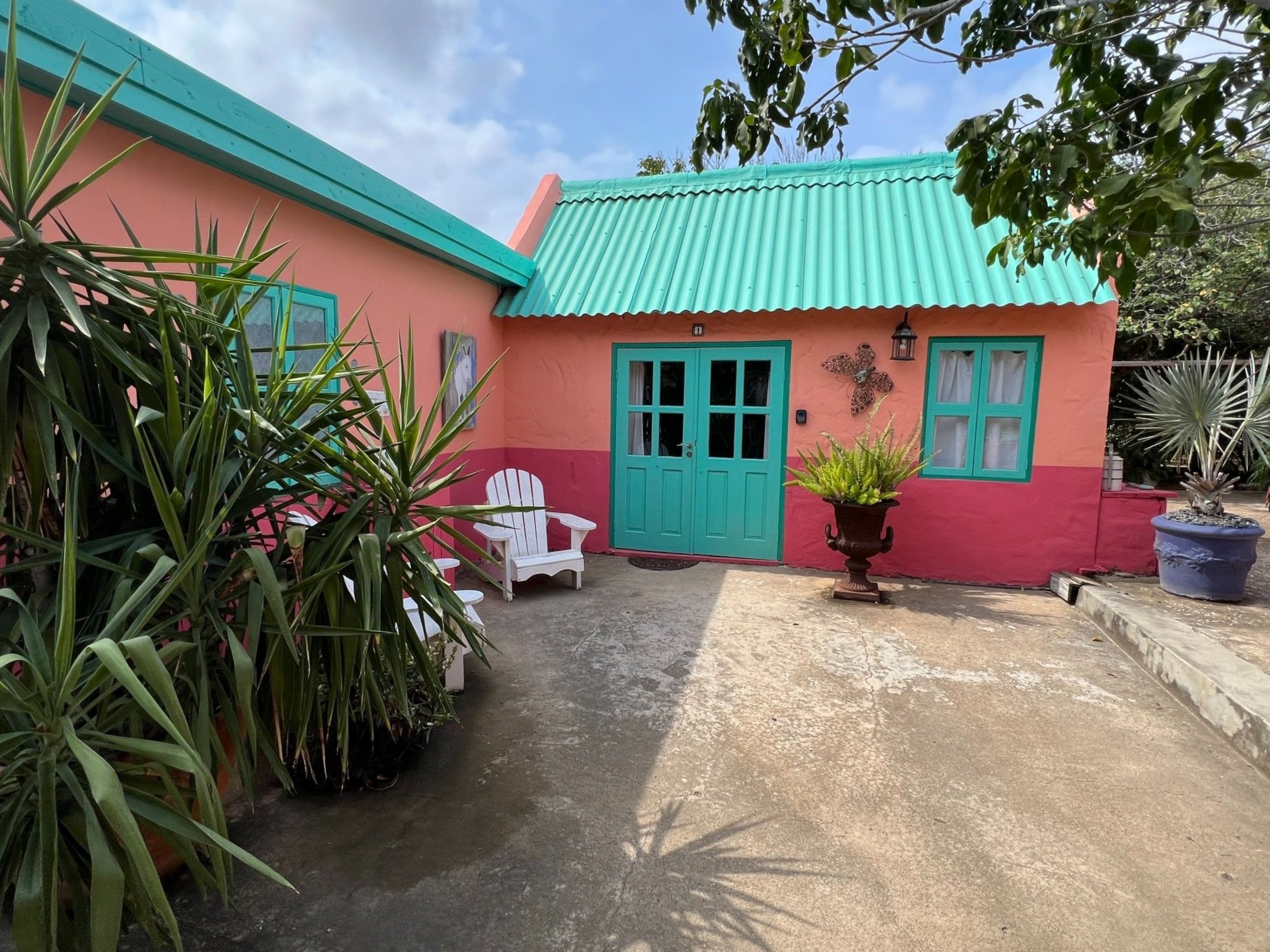
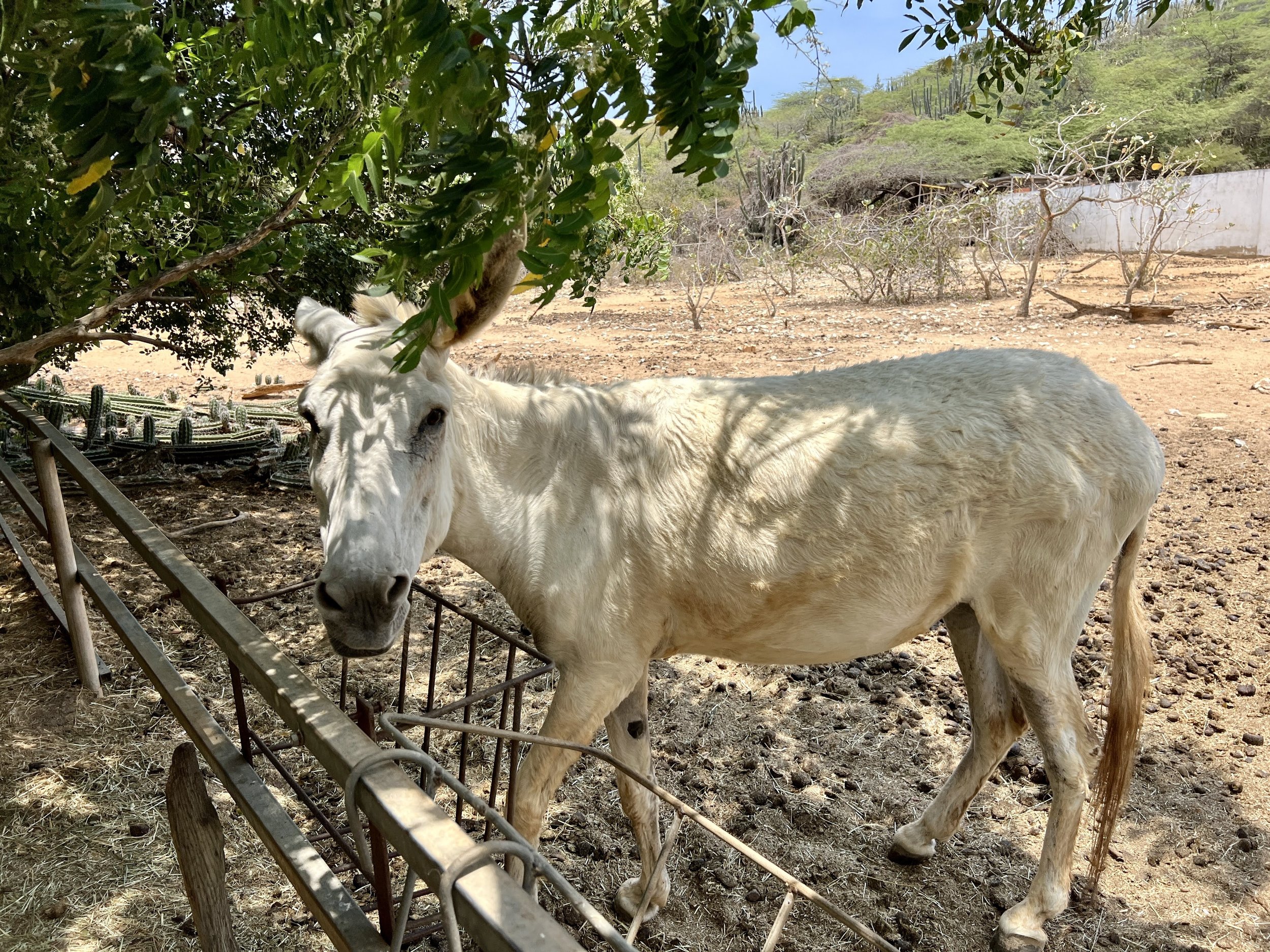
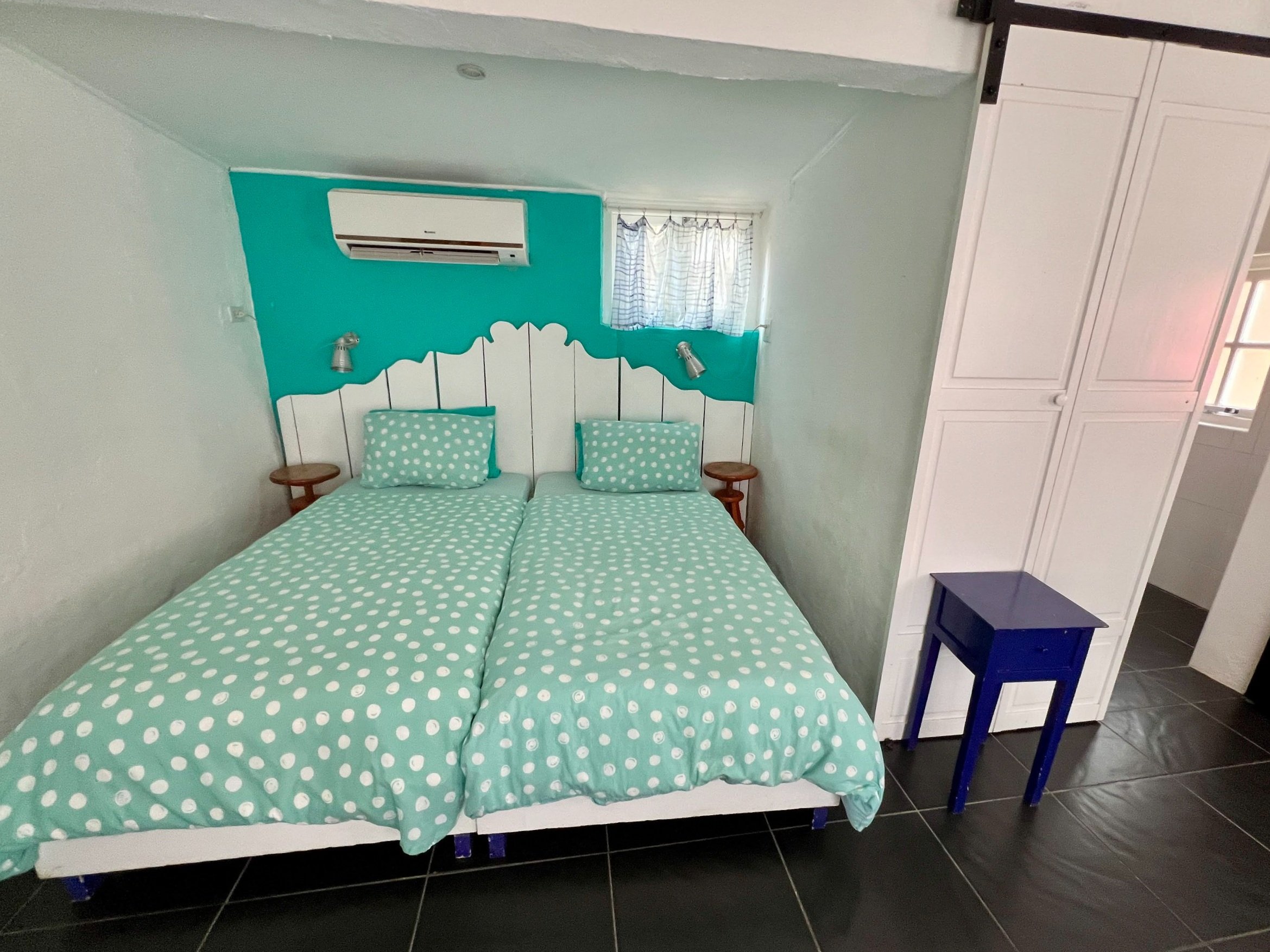
I dress for the 15-minute drive to the sanctuary to dole out the rest of the carrots and apples, but only through fences from the parking lot and visitor’s centre as instructed so the hungry donkeys don’t swarm me.
“They’re very friendly, they’re stoic, they’re nosy, they’re curious, they’re loyal, they’re funny — and they’re not stupid ass,” says Eldering. “They stole my heart.”
Desiree Eldering is the managing director of Donkey Sanctuary Aruba
Donkeys have been part of Aruba’s culture since the Spanish brought them here around 1500. They once helped transport people and goods like fresh water until they were made obsolete by cars and set free to fend for themselves. Hit by vehicles and abused, their numbers dwindled to near extinction.
The non-profit sanctuary was founded in 1997. Eldering has been with it since August 1998 and runs it on 10 acres of cacti-studded rural land in Bringamosa that’s leased from the government for a nominal fee. Four stallions were brought over from Bonaire last year to help create a healthier population.
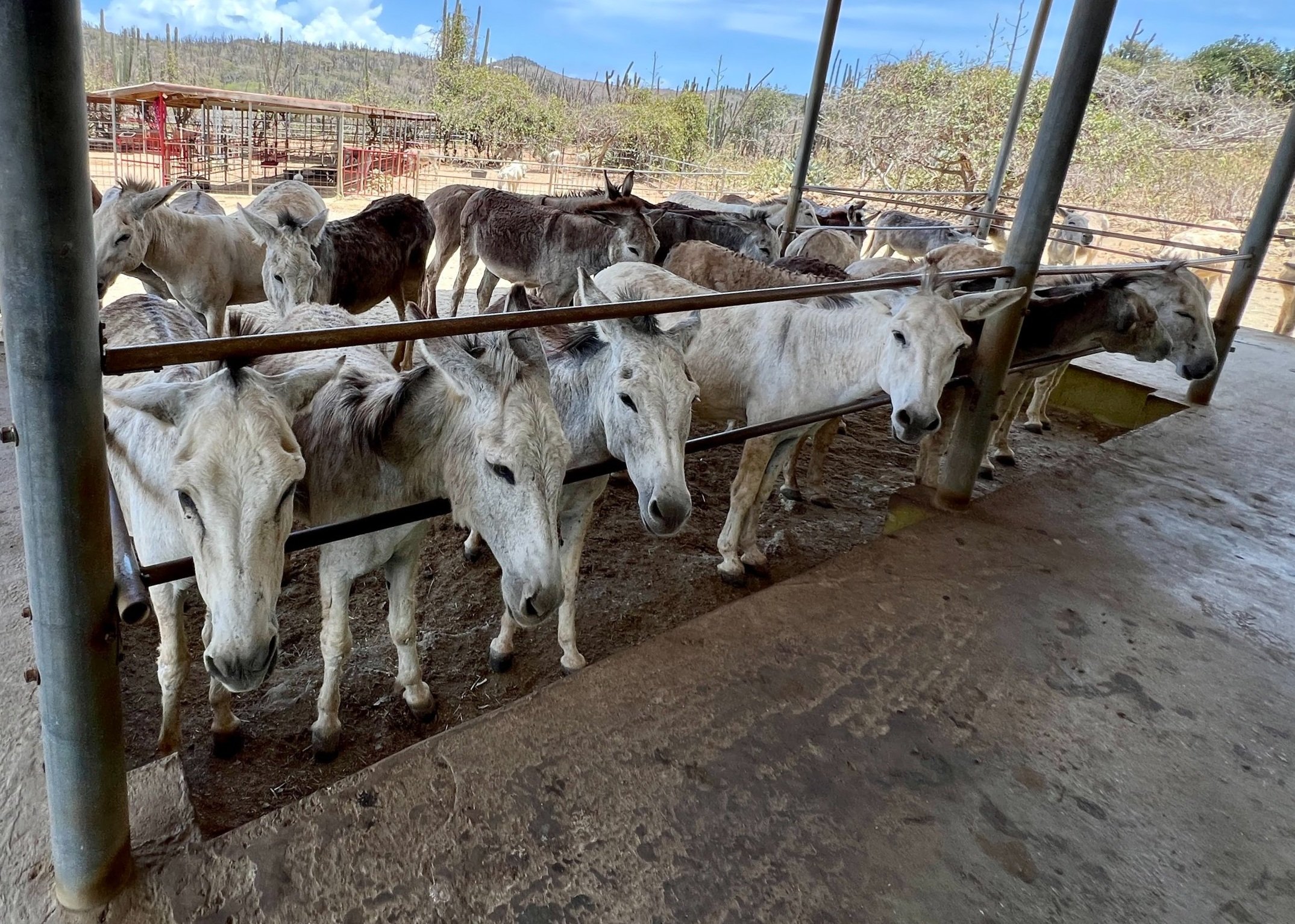
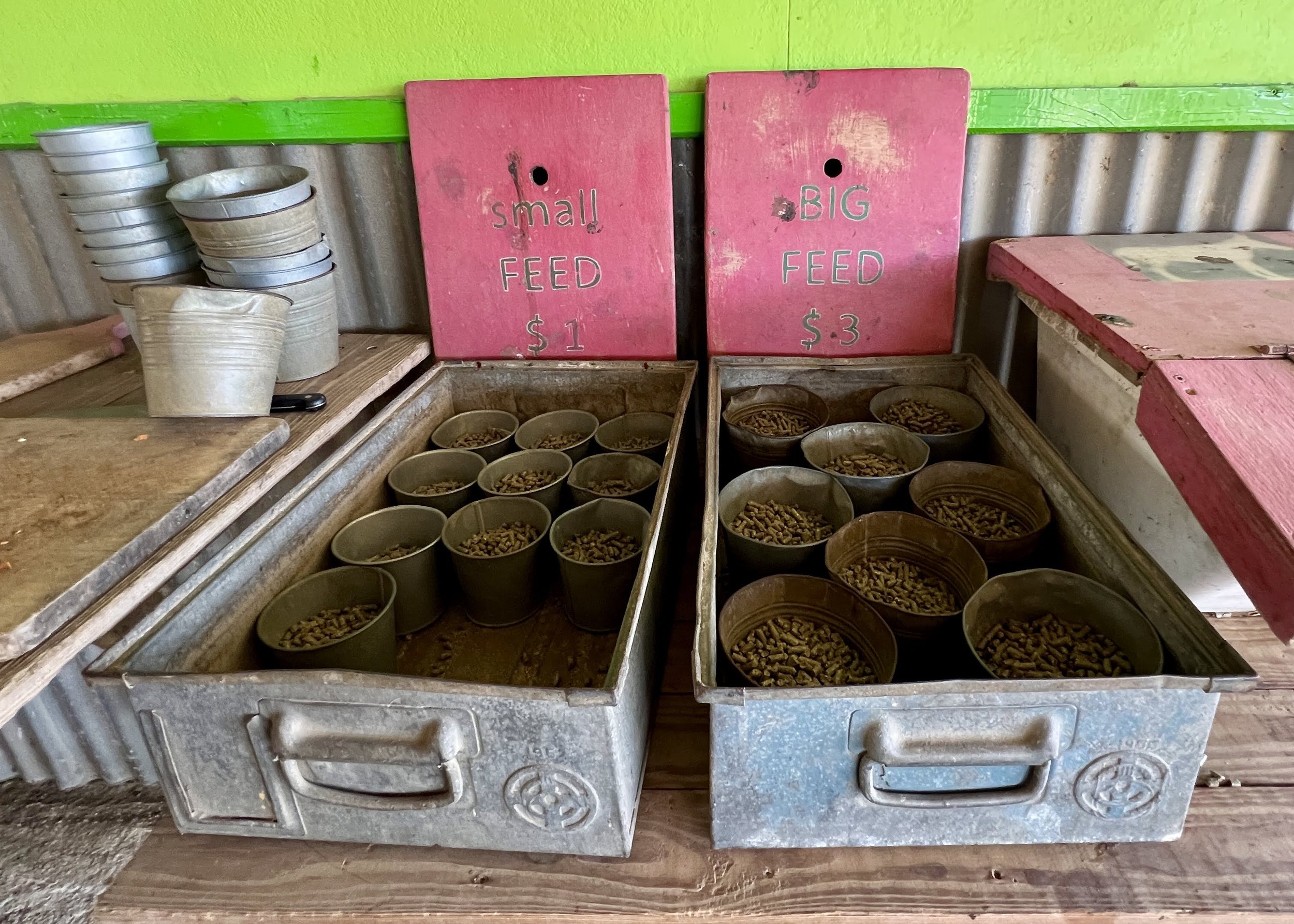
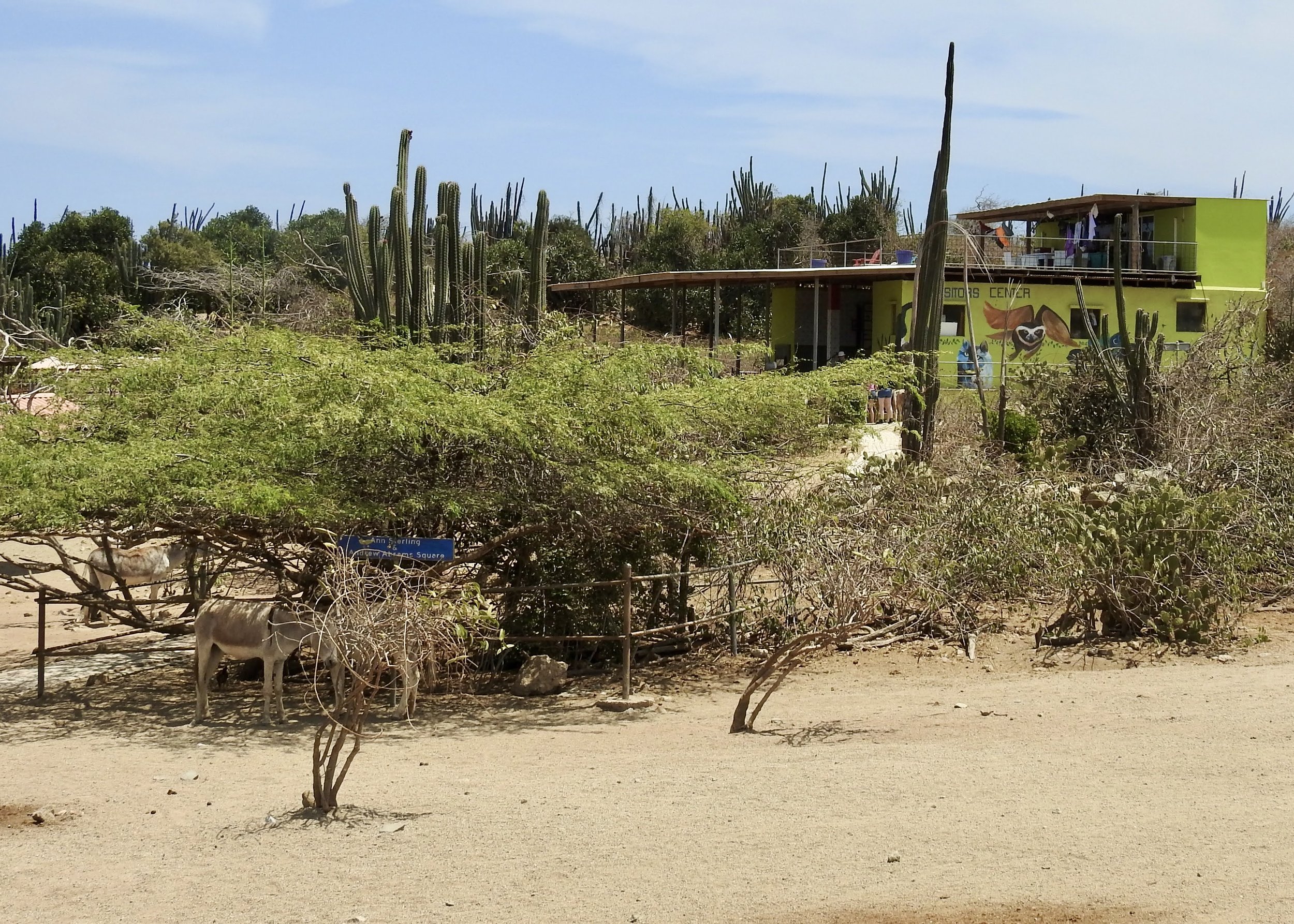
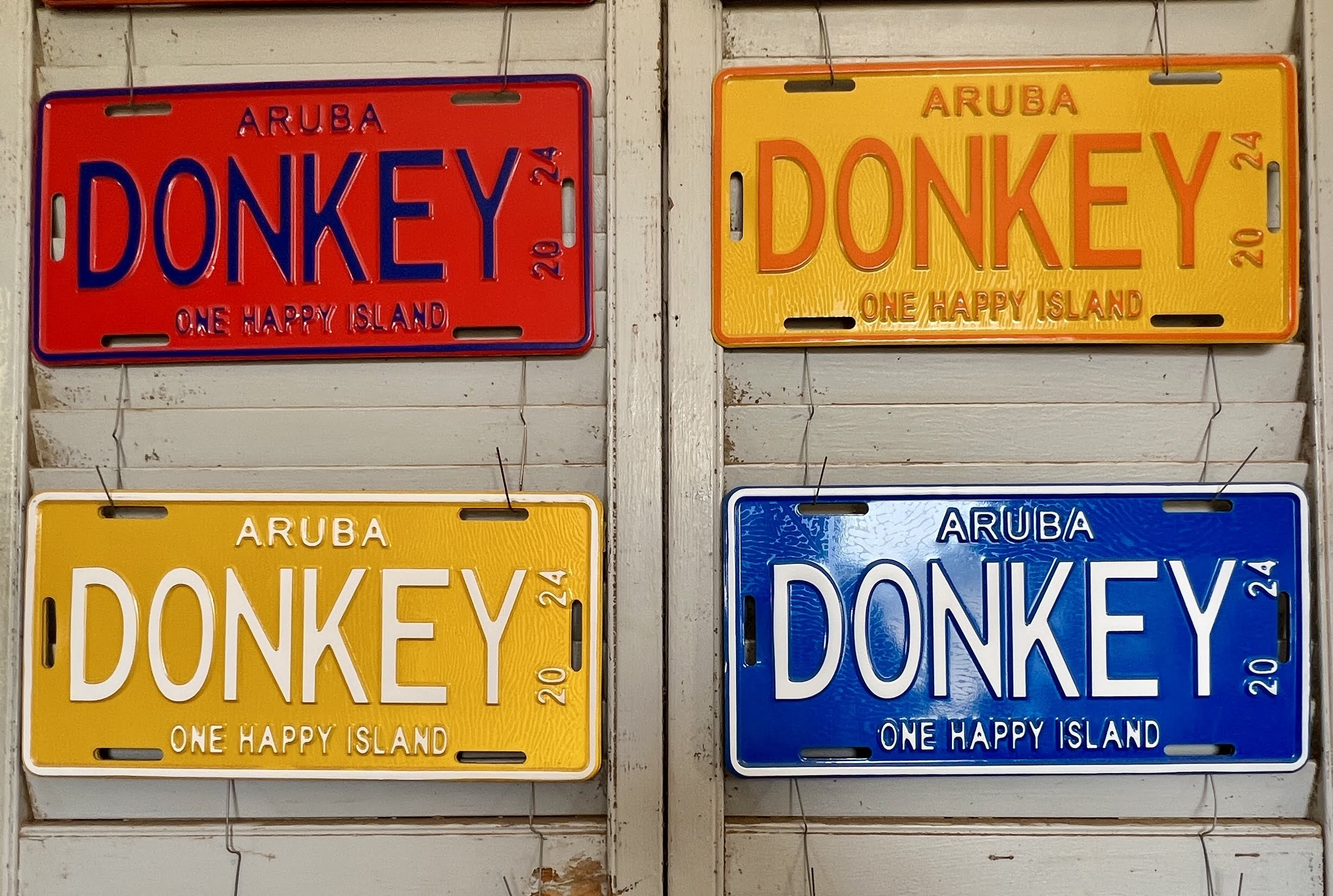
So who visits donkeys on a Caribbean vacation? The sanctuary is open 364 days of the year and draws 31,000 annual visitors, not to mention peacocks and peahens from next door. Entrance is free. Sales of donkey-themed souvenirs, snacks and small cups of feed help pay the bills. You’re welcome to volunteer for chores, make a donation or even pick a donkey and adopt it for a year (or longer).
“The donkeys have been here for more than 500 years so we think they belong here even though they are an invasive species,” says Eldering. It horrifies her to still see ignorant motorists feeding chicken nuggets, French fries and Cheetos to wild donkeys along the roads to entice them to come closer for photos.
Aruba, in the Leeward Antilles of the Southern Caribbean Sea just north of Venezuela, is part of the “ABC Islands” of Aruba, Bonaire and Curaçao. This constituent country of the Kingdom of the Netherlands has just 110,000 people and puts the slogan “One Happy Island” on its licence plates (which start with the letter V if they’re on rental vehicles).
Fofoti trees on Eagle Beach set up for a wedding
“Aruba, Jamaica, ooh I wanna take ya …” The 1988 Beach Boys hit “Kokomo” is about lovers relaxing on a fictional island off the Florida Keys, but it famously mentions Aruba five times in its hooky chorus and was included in the Tom Cruise film Cocktail.
“Kokomo” did much to popularize Aruba with North Americans, so people come for the sun and sand to an island where they can speak English and pay in American dollars. But I’m here for the desert-like landscape and the national park that protects almost 20 per cent of the island.
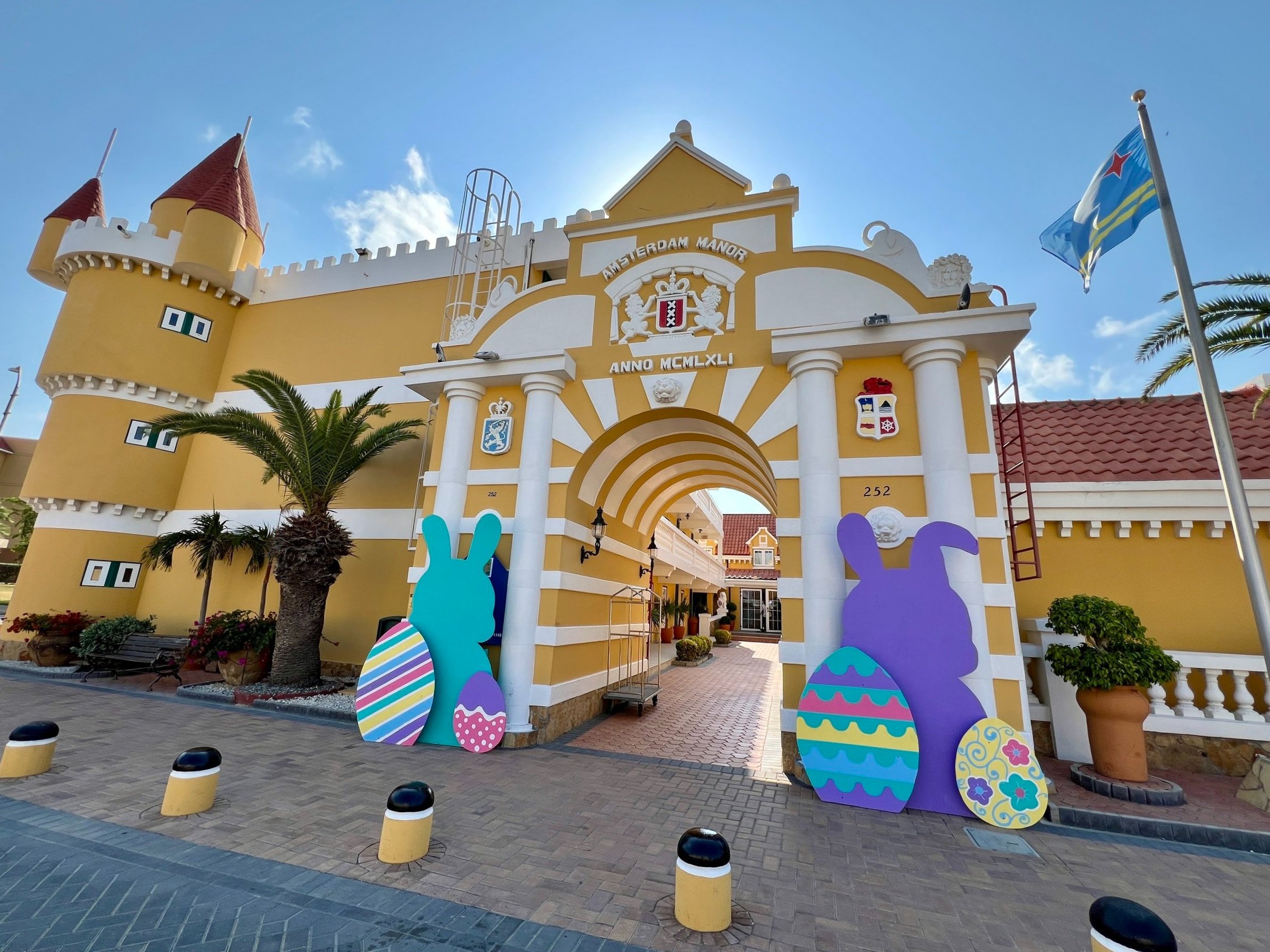
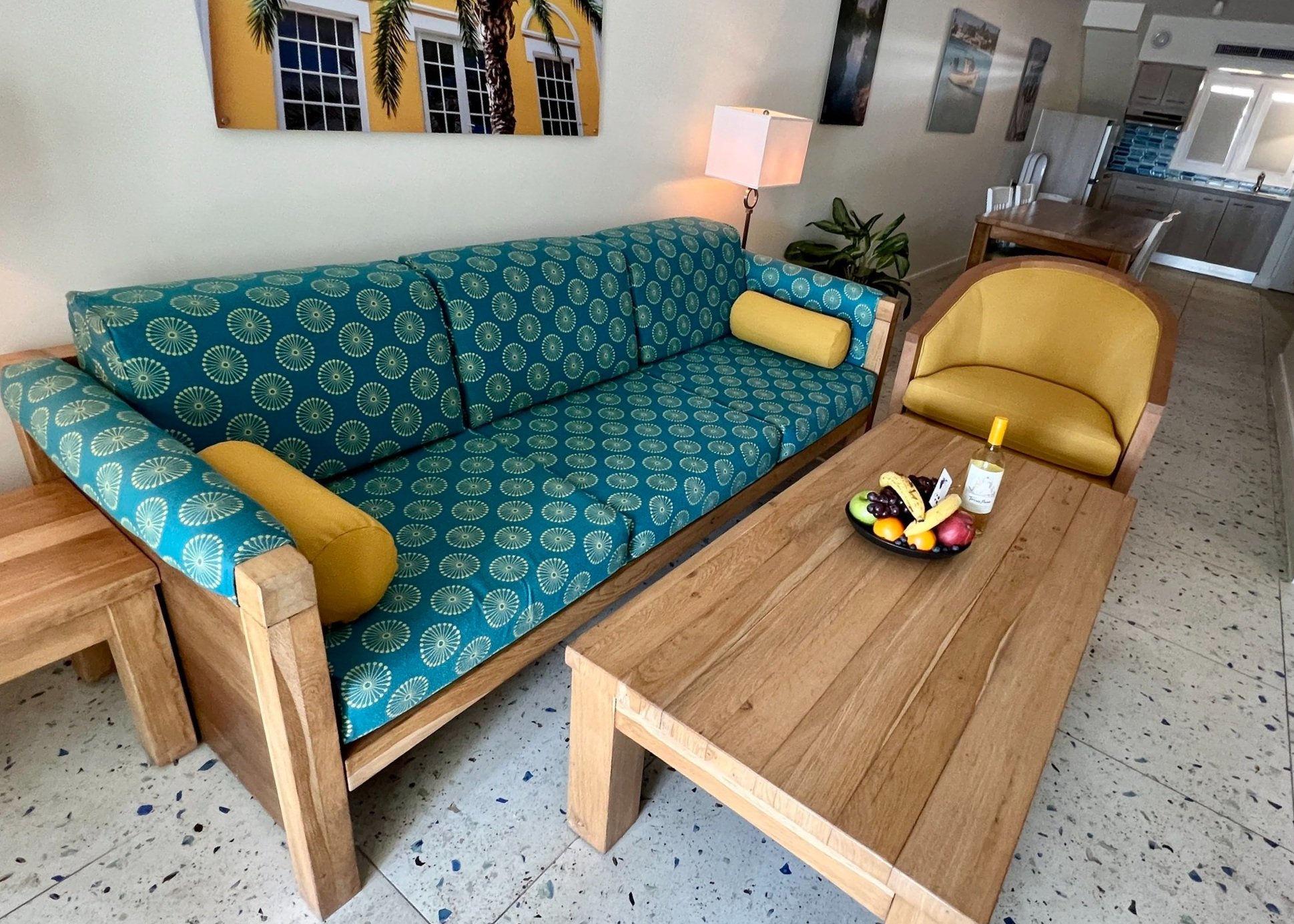
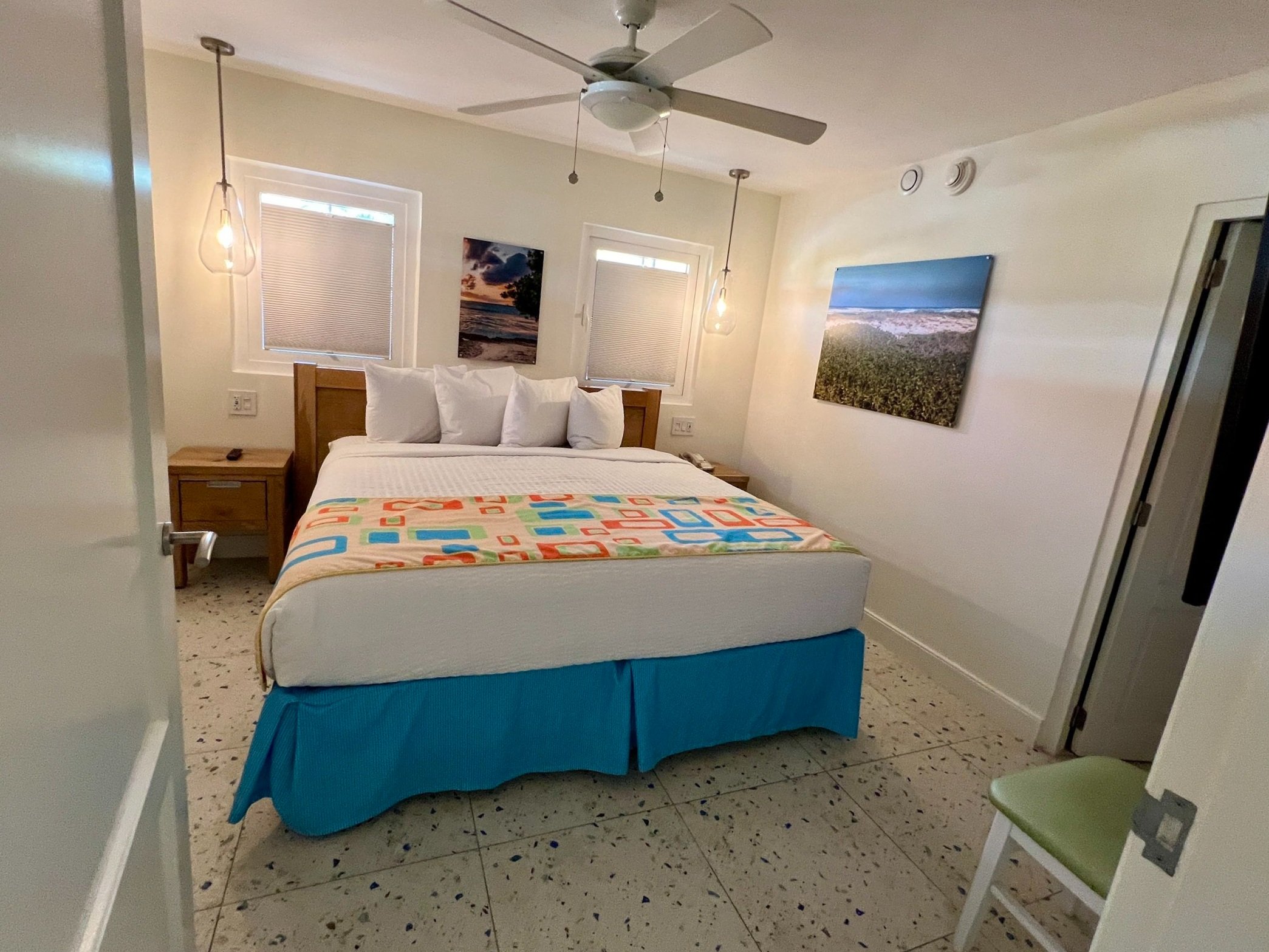
My four-night stay in April is divided between the “donkey Airbnb” and the Amsterdam Manor Beach Resort.
Boasting Dutch colonial architecture, the family-run resort is in the low-rise hotel area that’s between the high-rise hotel strip and the colourful capital of Oranjestad. It’s steps from Eagle Beach, home of the iconic Fofoti tree that has been bent and twisted by wind and always points southwest.
Bitterballen with Dijon dipping sauce at Horizons Lounge at Amsterdam Manor Beach Resort
It’s at Amsterdam Manor’s Horizons Lounge that I try bitterballen, a Dutch bar snack that pairs beef-filled croquettes with a creamy Dijon dip. And it’s from here that I make the two-minute drive to Super Food for Dutch treats like European cheese, salty black licorice and thin, round, two-layer stroopwafel cookies held together with caramel syrup or honey.
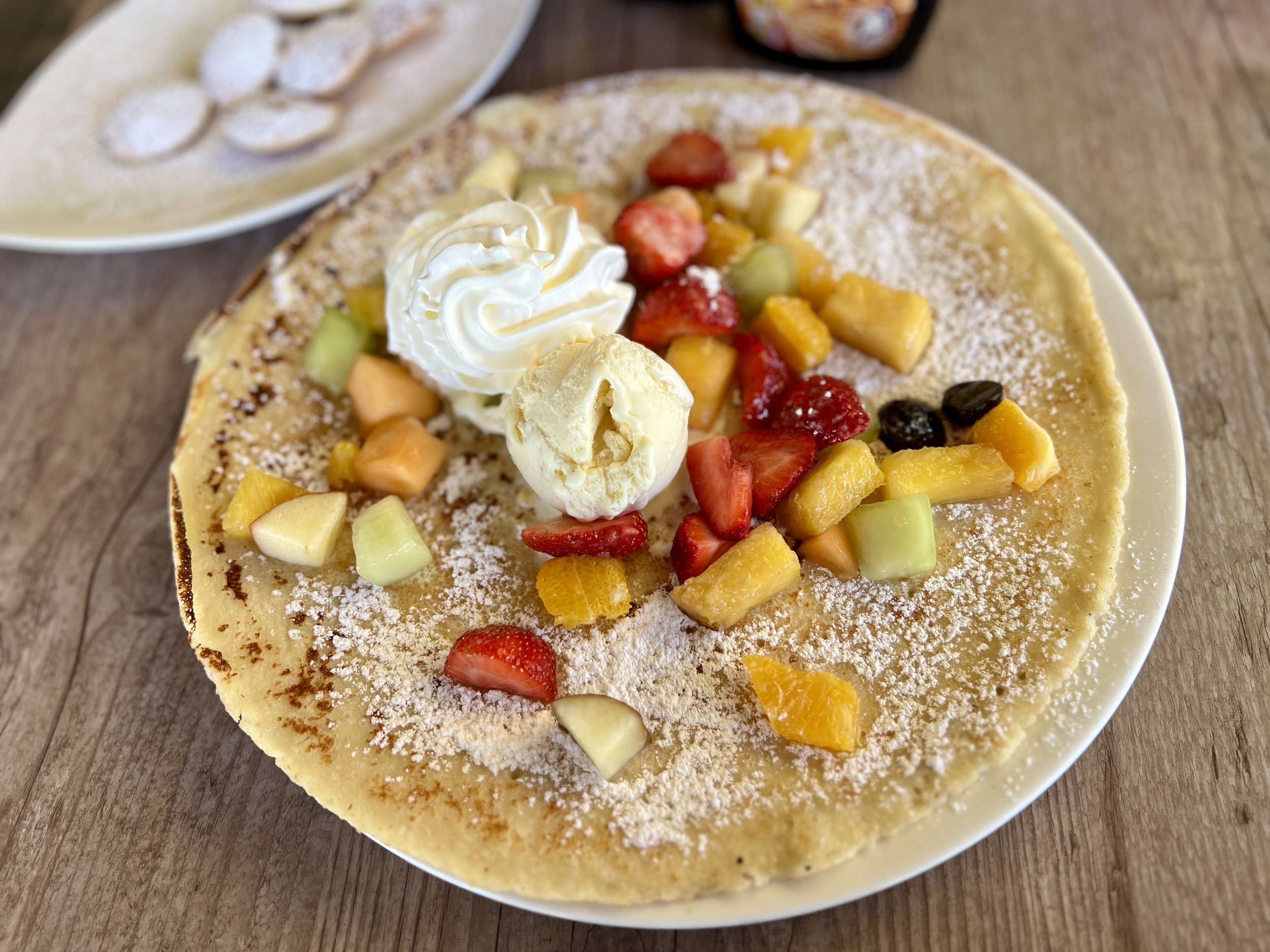
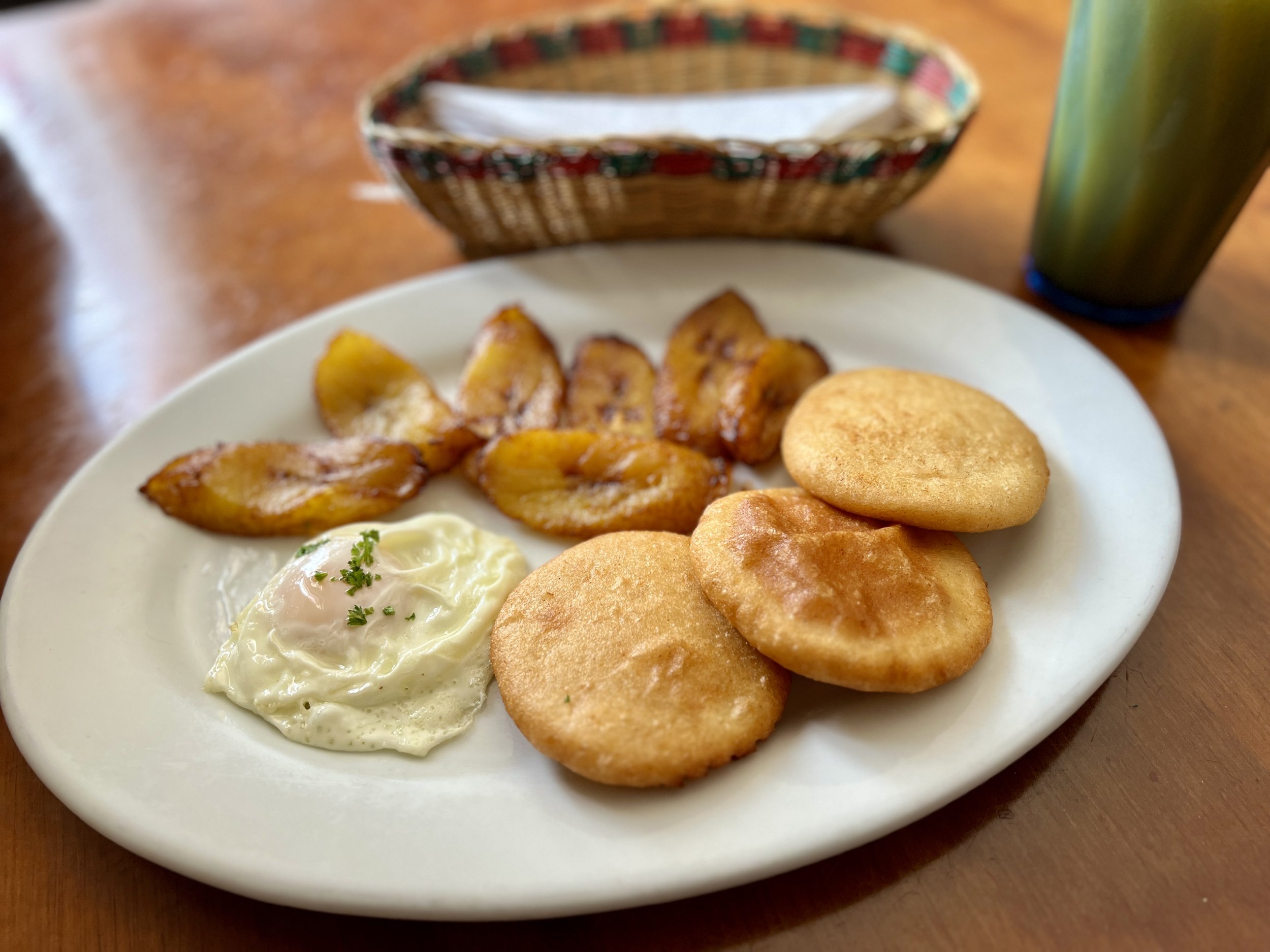
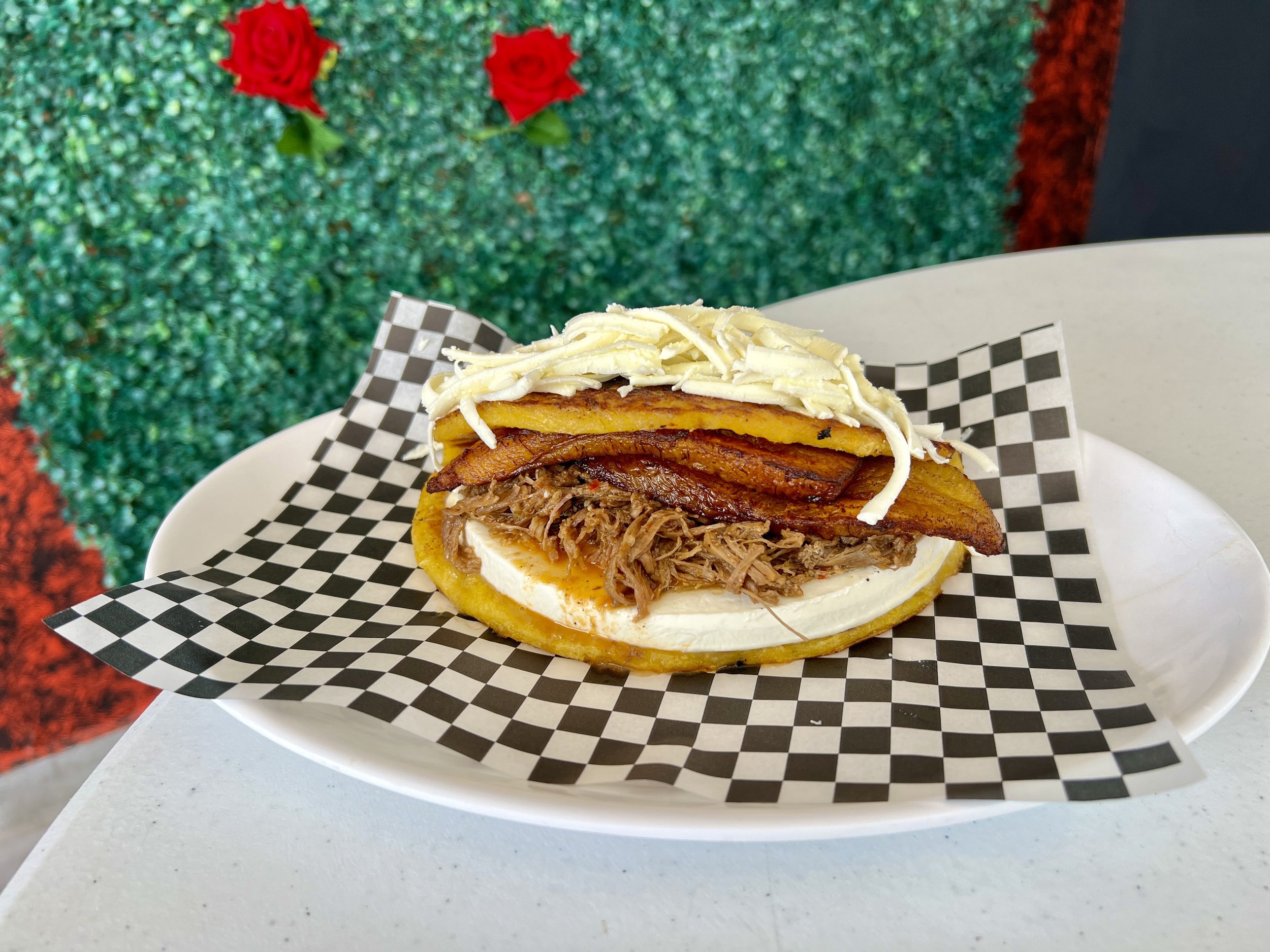
Nothing’s more than about half an hour away in tiny Aruba, which is just 32 kilometres long and 10 kilometres across at its widest point.
So it’s easy to drive around eating crêpe-like “pancakes” at the Dutch Pancakehouse in Oranjestad’s Renaissance Marketplace, Colombian arepas at New Pueblito Paisa in San Nicolas, and Venezuelan cachapas at Arepados Bar Café near the airport.
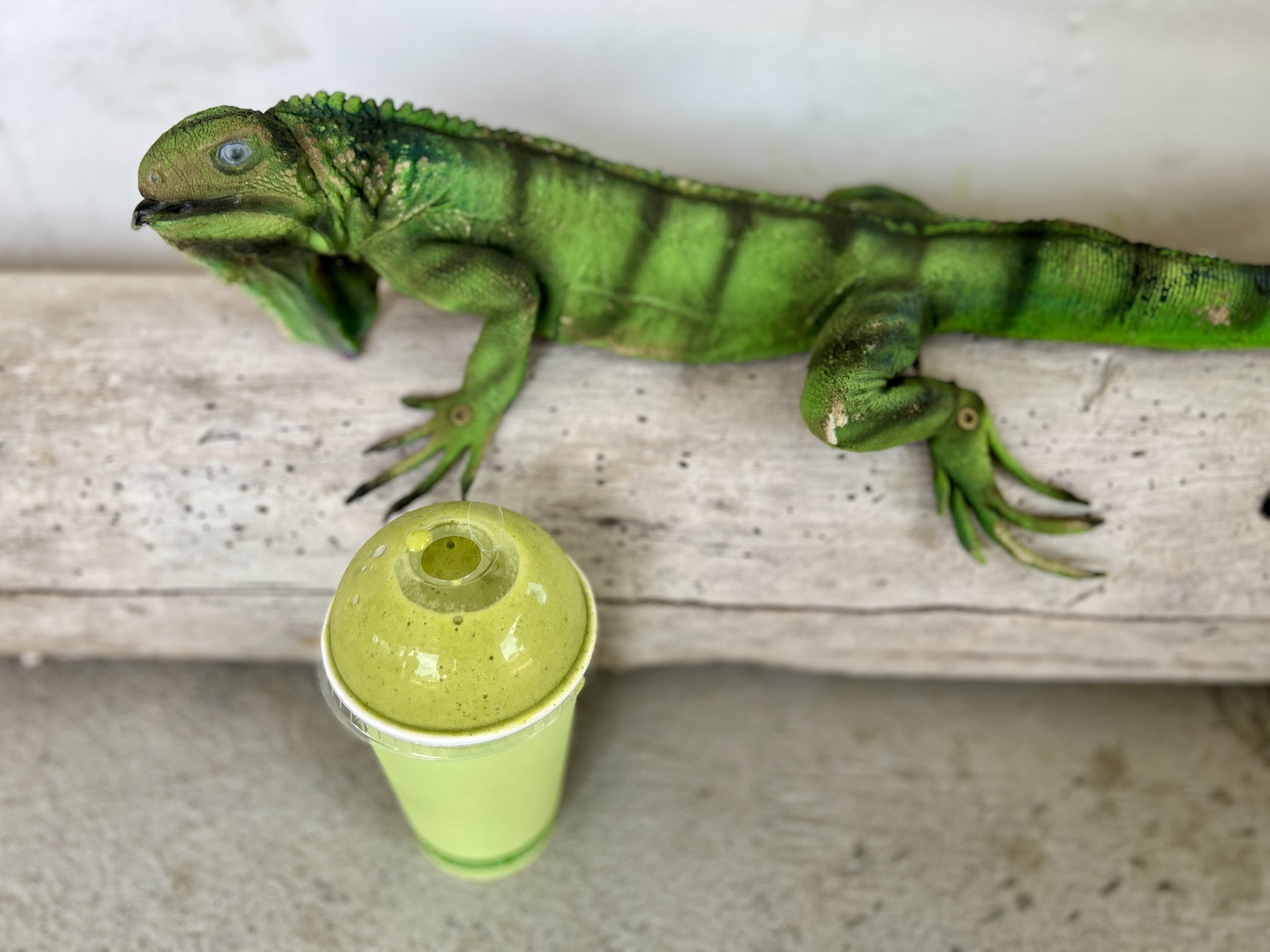
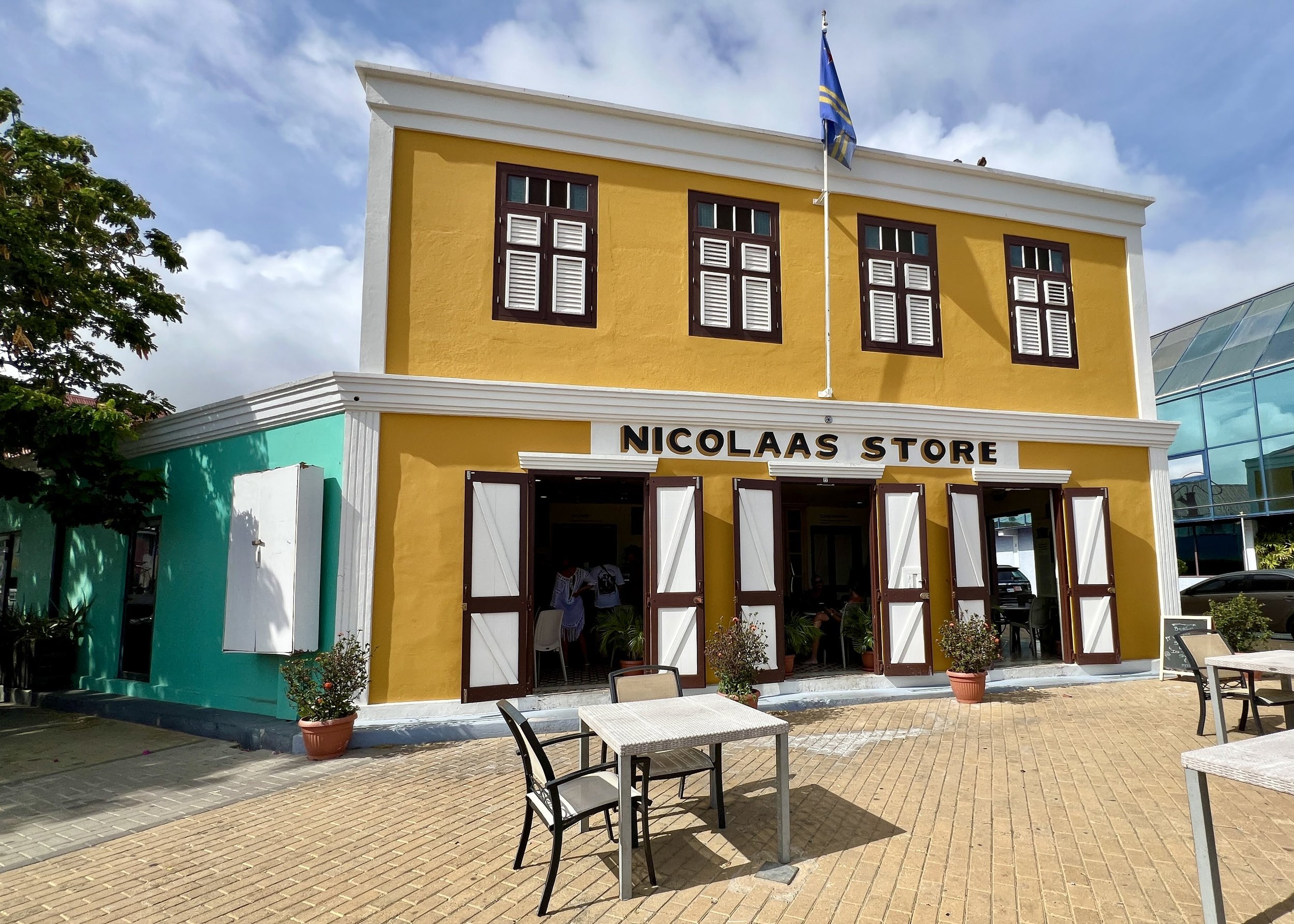
In Savaneta, I hydrate with a “wild green” juice at Mauchi Smoothies. In San Nicolas, I beat the heat with an iced latte from Kulture Café in the Nicolaas Store.
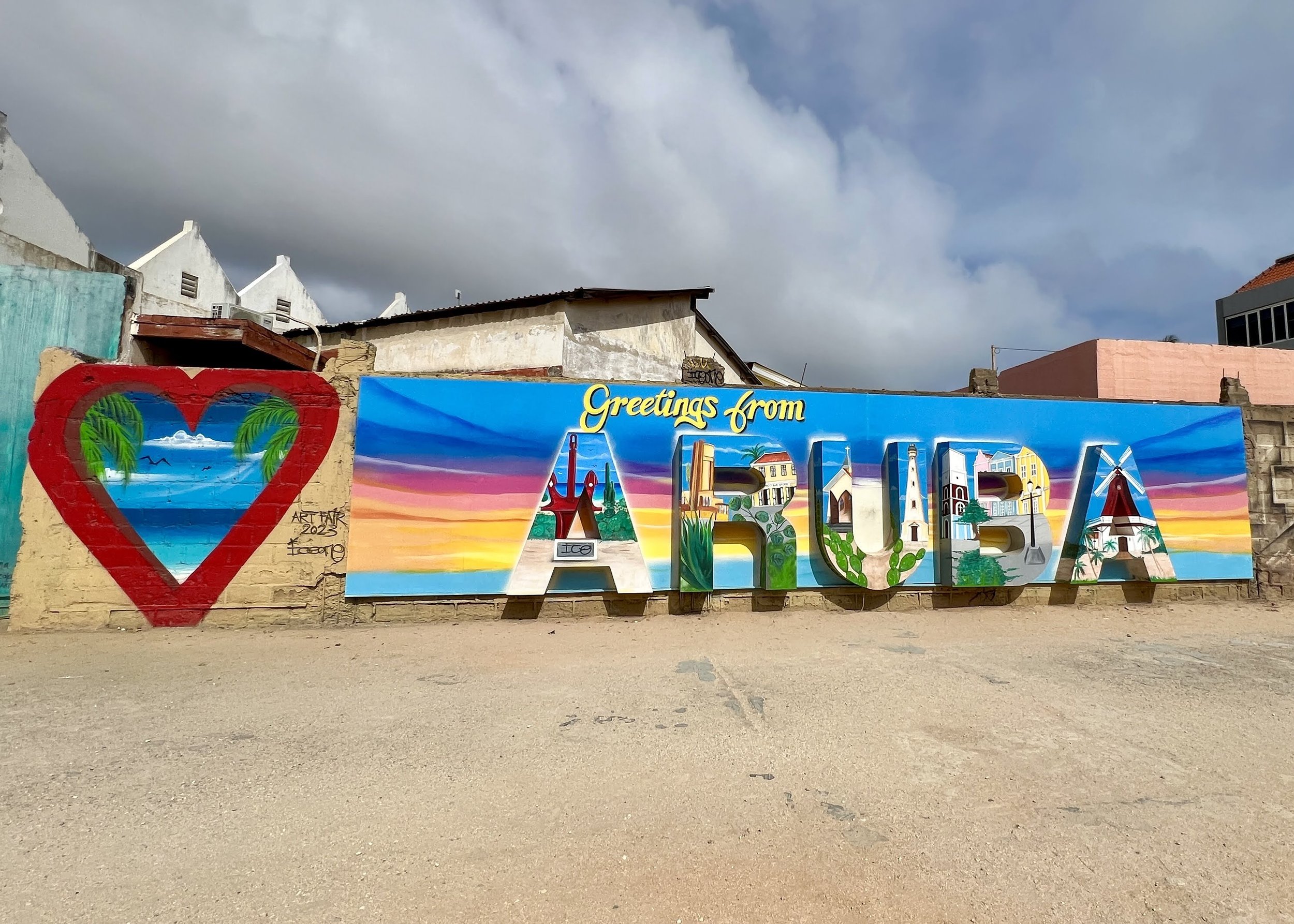
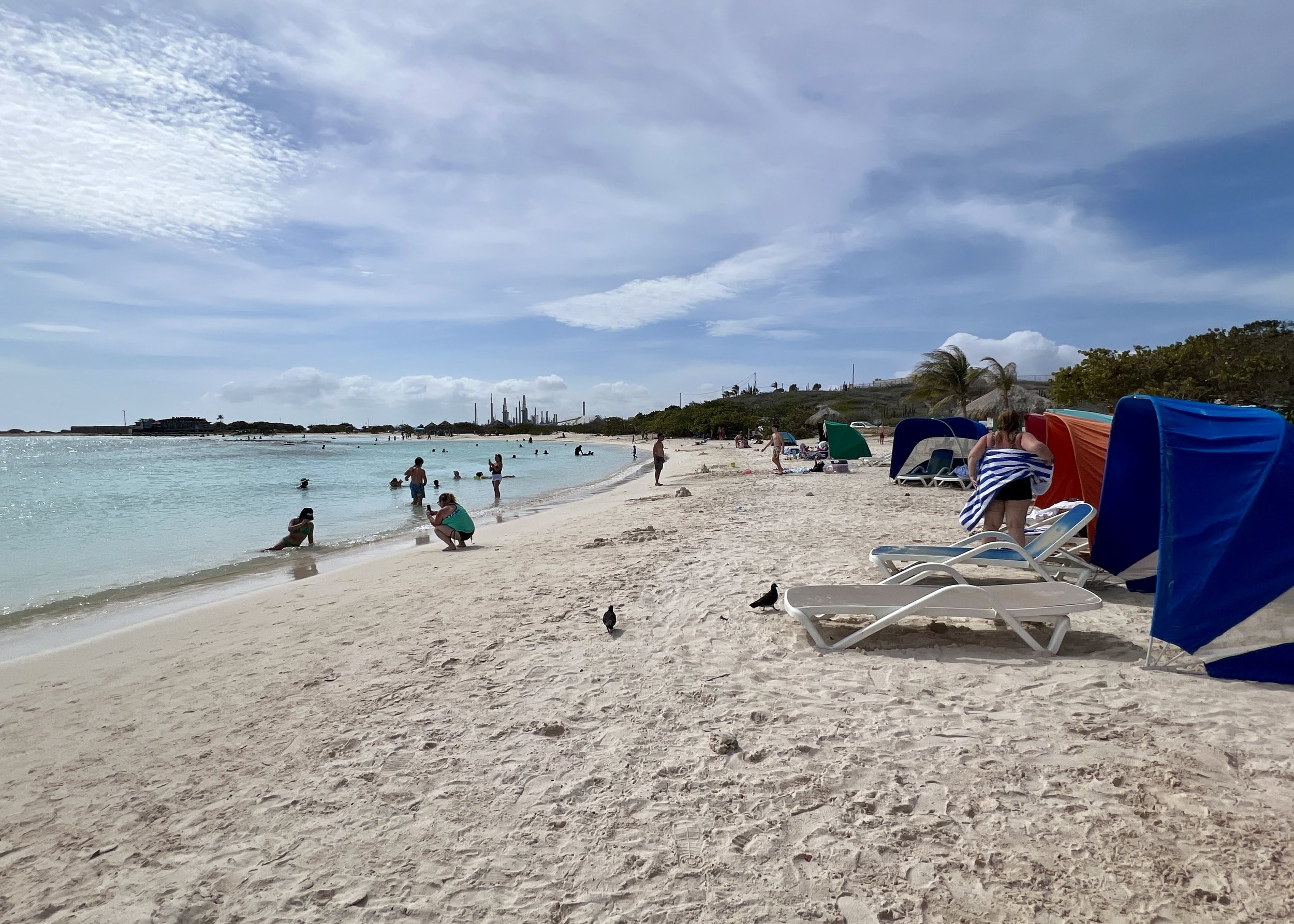
You’ll probably pass through San Nicolas on the way to Baby Beach — famous for being a sheltered half moon bay with shallow turquoise waters. But I pass by Baby Beach to get to San Nicolas — famous for its street murals.
Local and global artists have left their creations on walls and buildings as part of the Aruba Art Fair that happens every September. The murals are clustered near the Nicolaas Store (and another branch of Mauchi Smoothies) so it’s easy to wander through the open-air gallery.
This burgeoning art district is the brainchild of Tito Bolivar who saw street art in Bogota and pledged to transform the rundown refinery town of San Nicolas after its oil refinery was shuttered in 2012. Forbes.com has called San Nicolas the “street art capital of the Caribbean.”
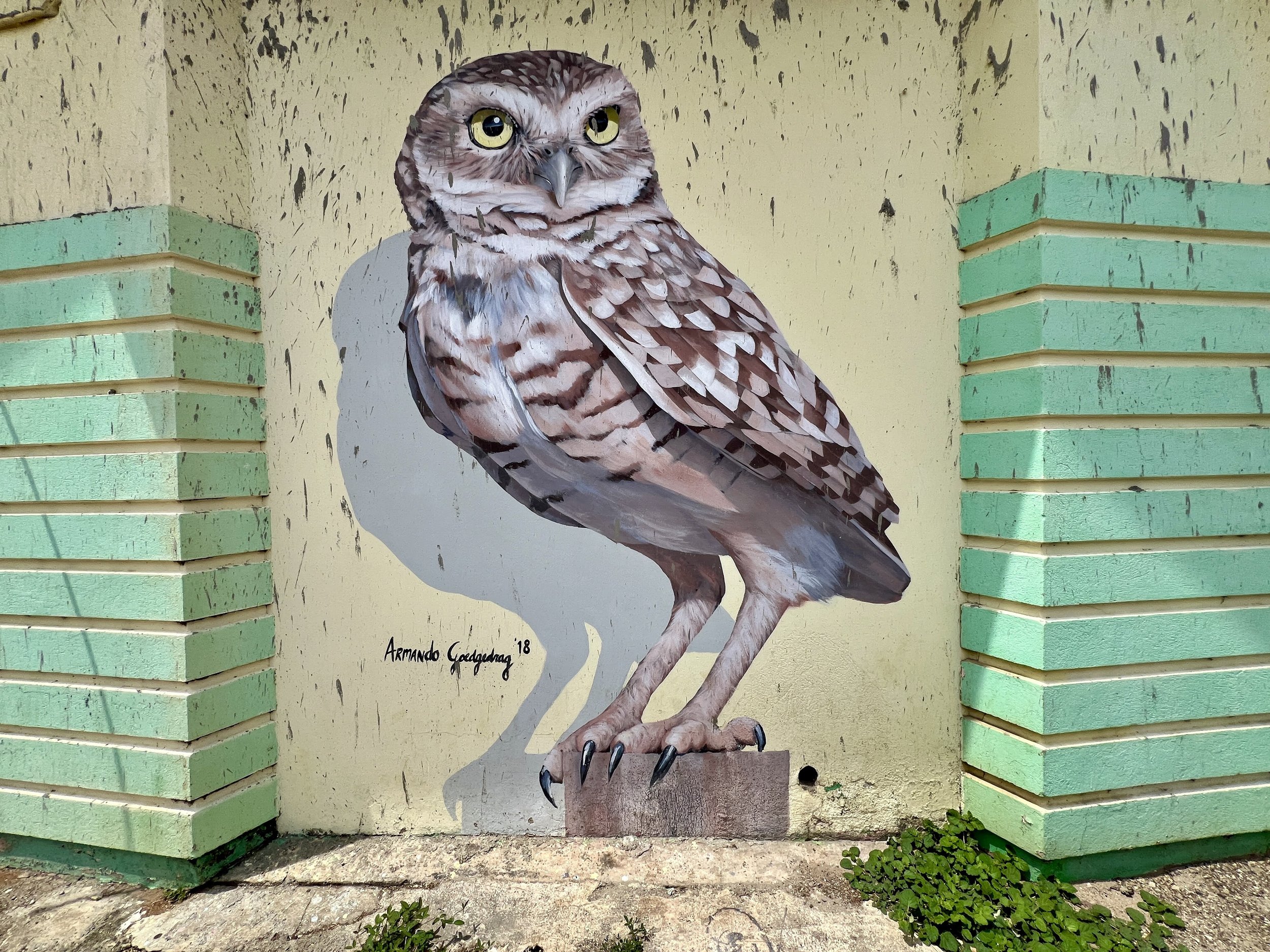
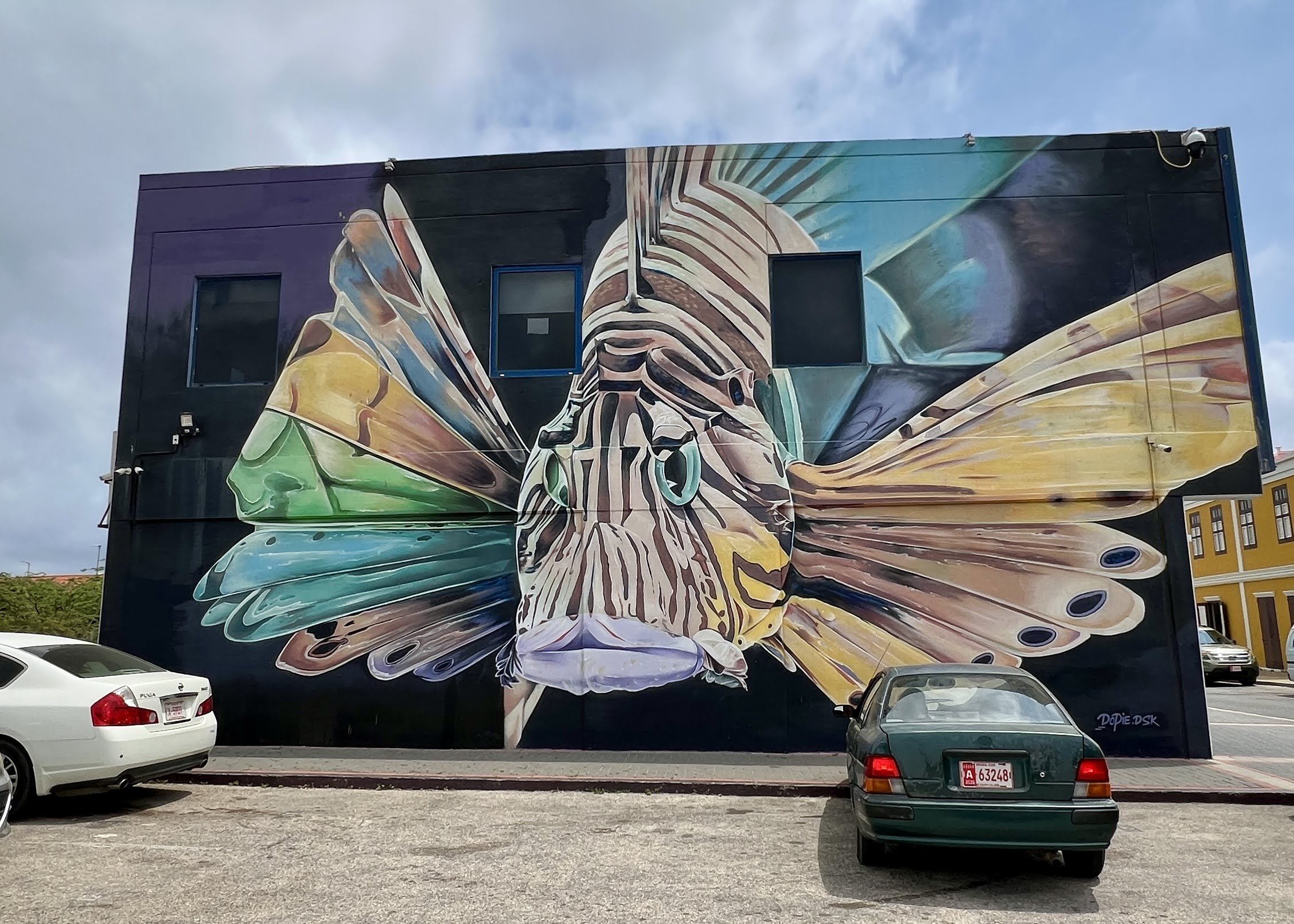
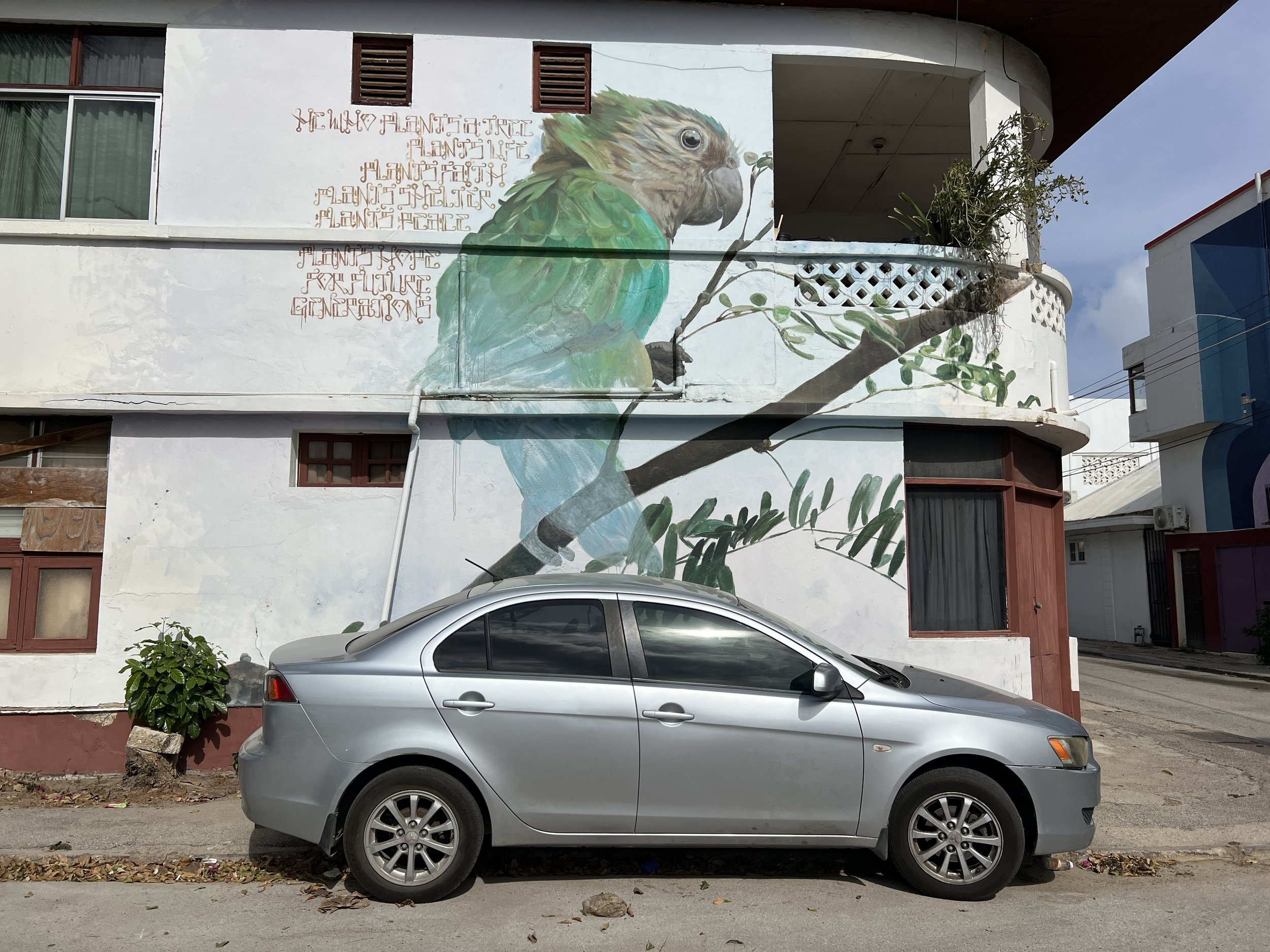
I’m drawn to the murals that have nature themes.
Amsterdam graffiti/street artist Dopie did a stunning one of the invasive lionfish that threatens Aruba’s coral reef system. Aruba-based Armando Goedgedrag painted a Shoco, a rare burrowing owl that I look for in the wild but don’t find.
Curaçao artist Garrick Marchena painted prikichi, Aruba’s national bird, on a house but makes the Arurban parakeet subtly fade out to symbolize how it’s being threatened by invasive boa constrictors and human-caused habitat destruction.
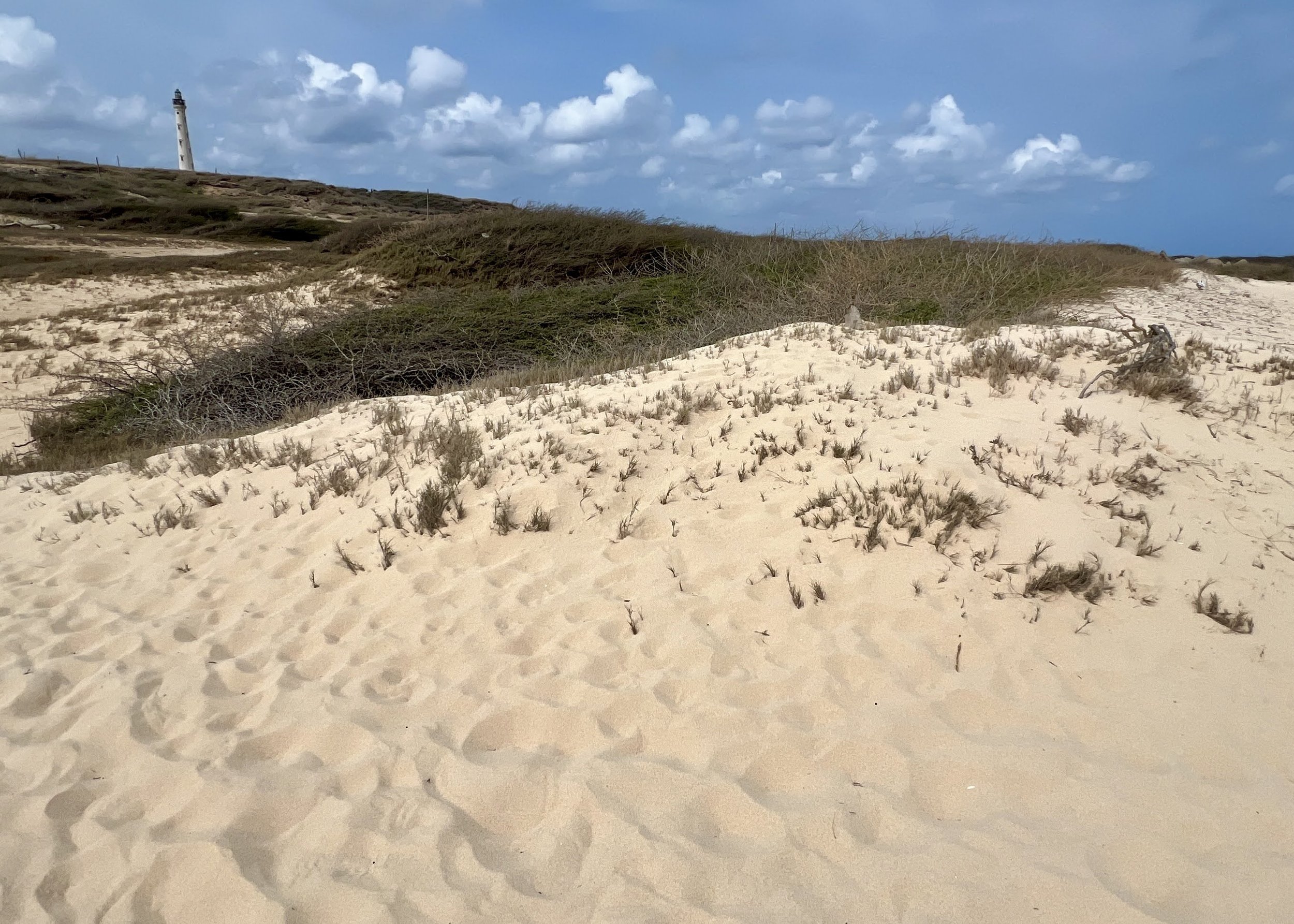
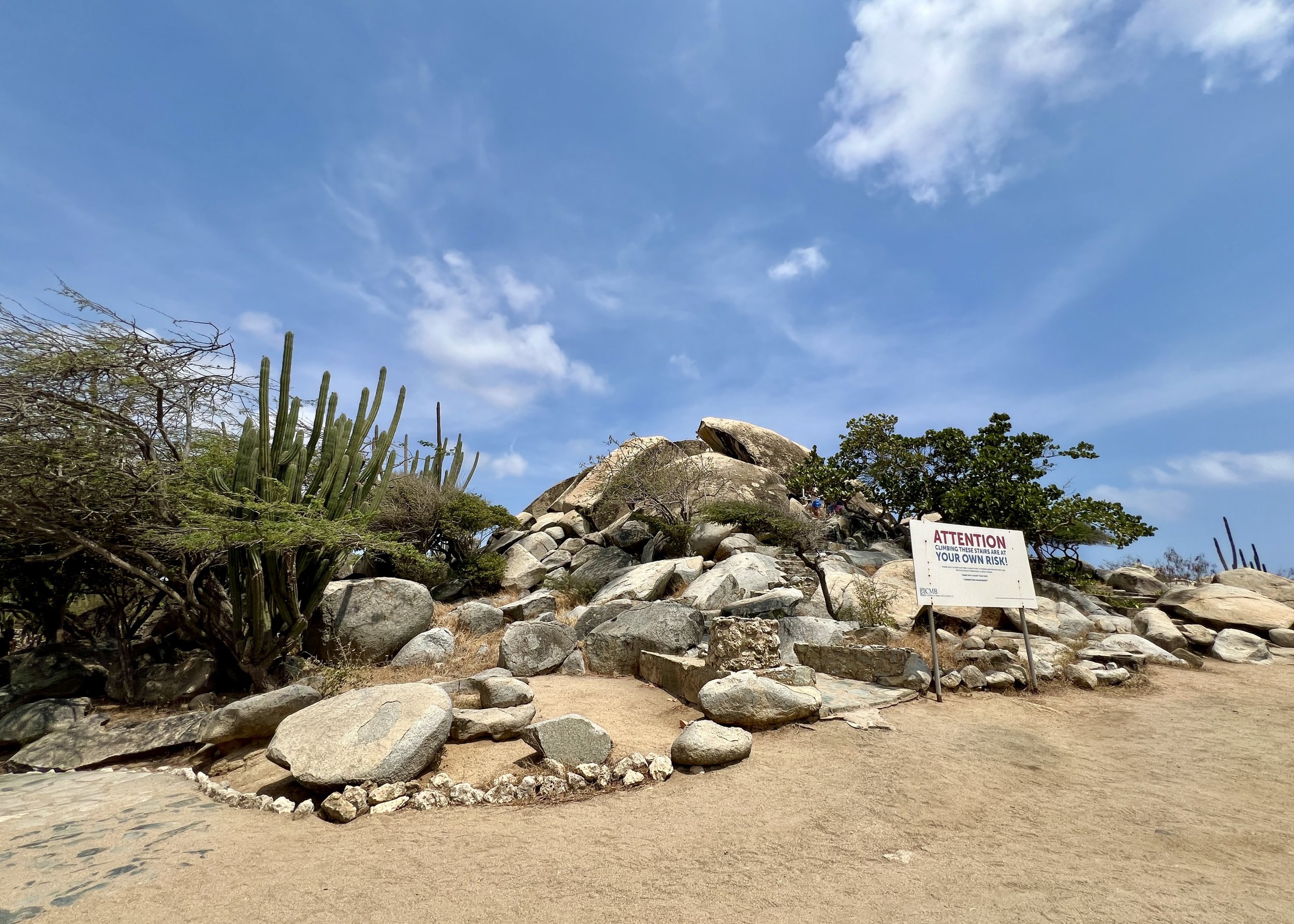
I also marvel at Aruba’s natural beauty at the California Lighthouse on the island’s northwestern tip overlooking the protected Sasarawich Dunes. I climb the Casibari Rock Formation, huge tonalite boulders in a residential area near Santa Cruz.
Not to be missed, though, is Arikok National Park, which protects almost 20 per cent of the island.
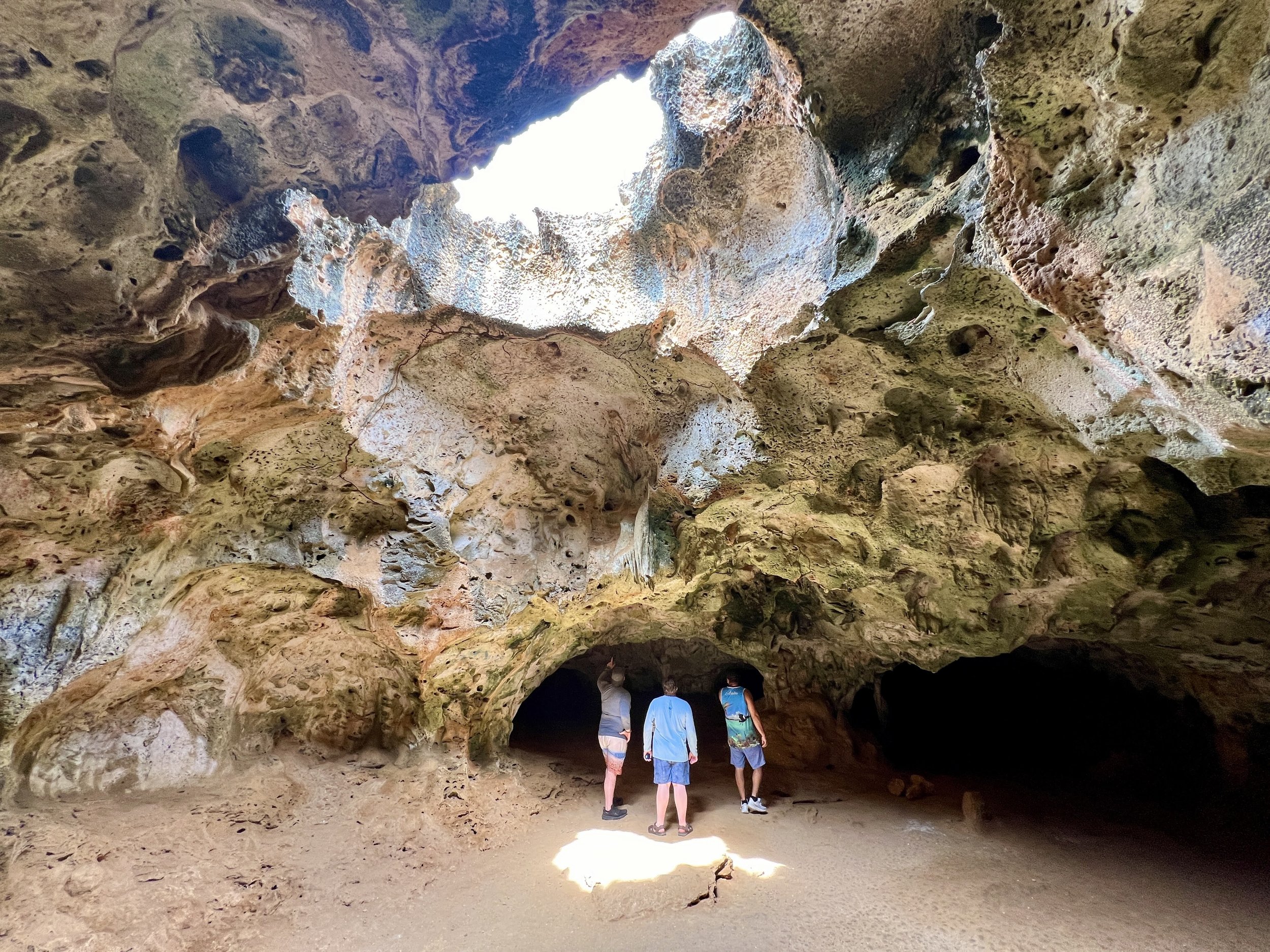

You need a high-clearance rental vehicle to properly explore beyond the park’s paved and gravel roads, which I don’t have, but I am able to explore Fontein and Quadirikiri caves and then enjoy goats running among the turbines at the private Windpark Vader Piet on the edge of the park.
I hop in a park vehicle to see Yellow-shouldered amazons, a type of parrot known locally as Loras that was seized by the coast guard from illegal immigrants, saved from the pet trade by the Aruba National Park Foundation, nursed back to health and then released into Arikok.

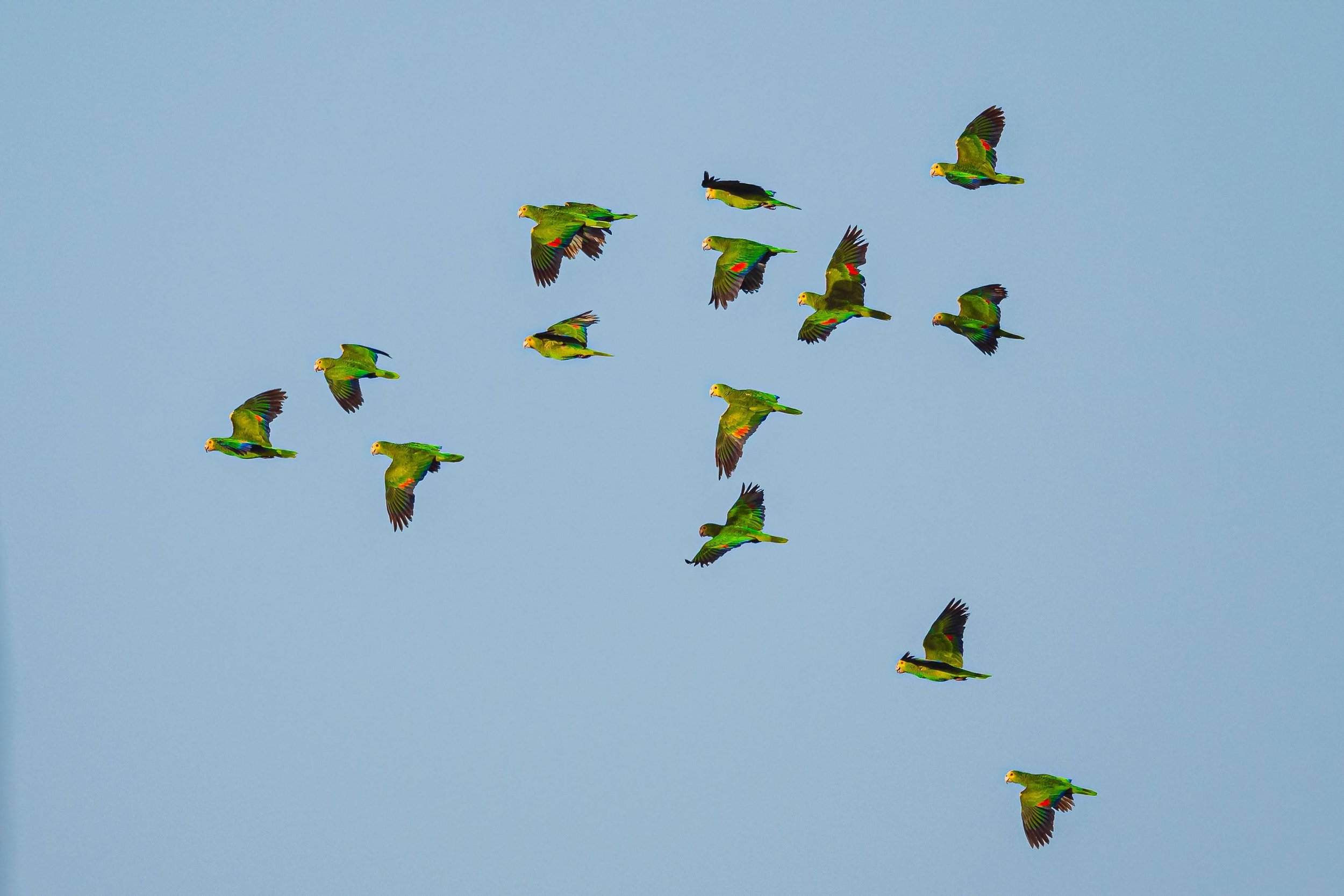
Loras — long loved as pets — hadn’t been seen in the wild on Aruba since 1947.
Now the boisterous young parrots still cluster around an old plantation called Plantage Prins, foraging and exploring by day and getting supplemental meals of fruit, veggies and legumes at breakfast and dinner so park staff can keep an eye on them.
Venezuelan Troupials
On my last night in Aruba, I join ranger Jonathan Ras for a private sunset hike on the Cunucu Arikok trail. We spot orange and black Venezuelan troupials and drab but melodic Tropical mockingbirds. We examine three main cactus varieties and all kinds of local flora on our leisurely stroll.
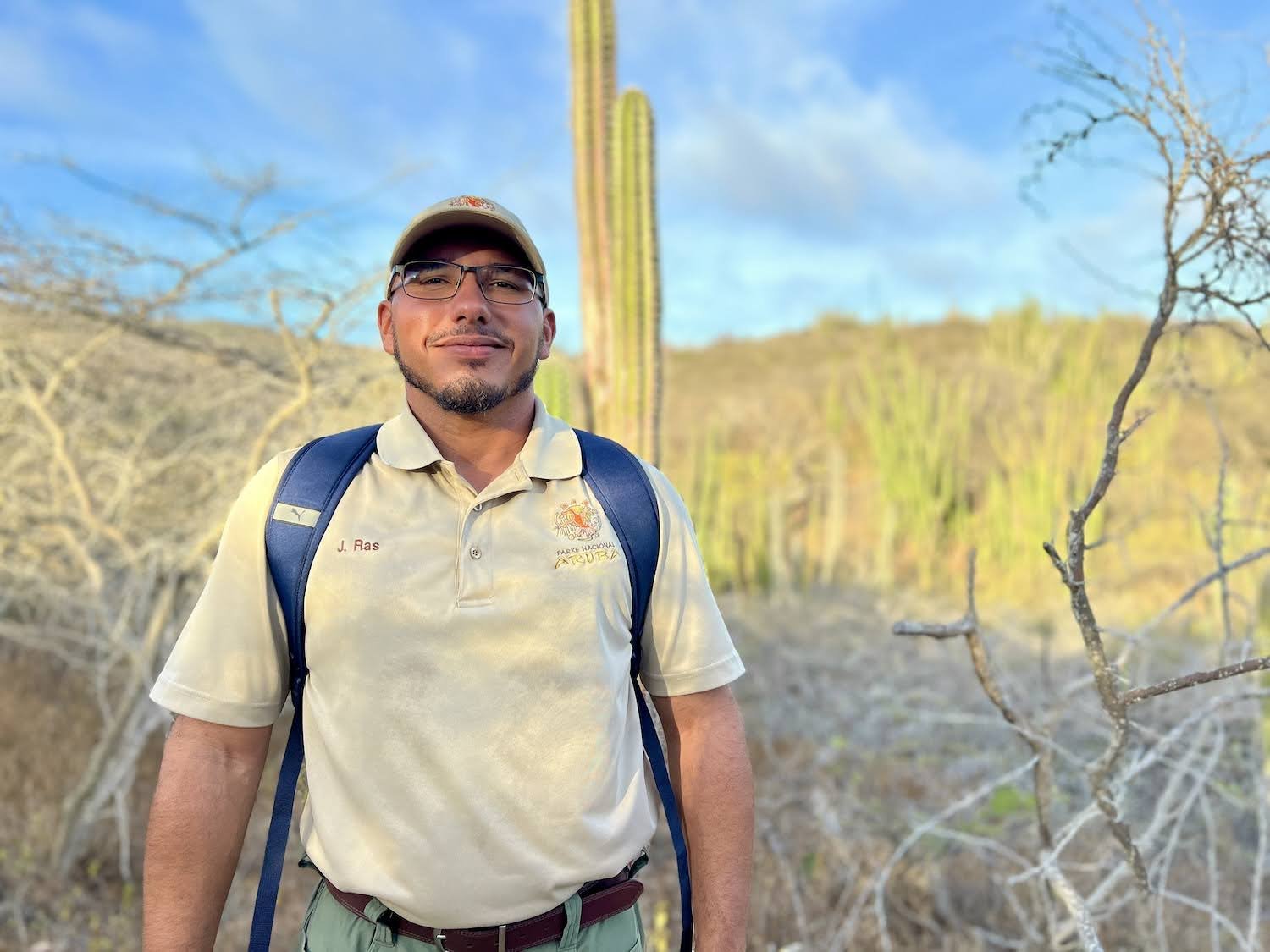
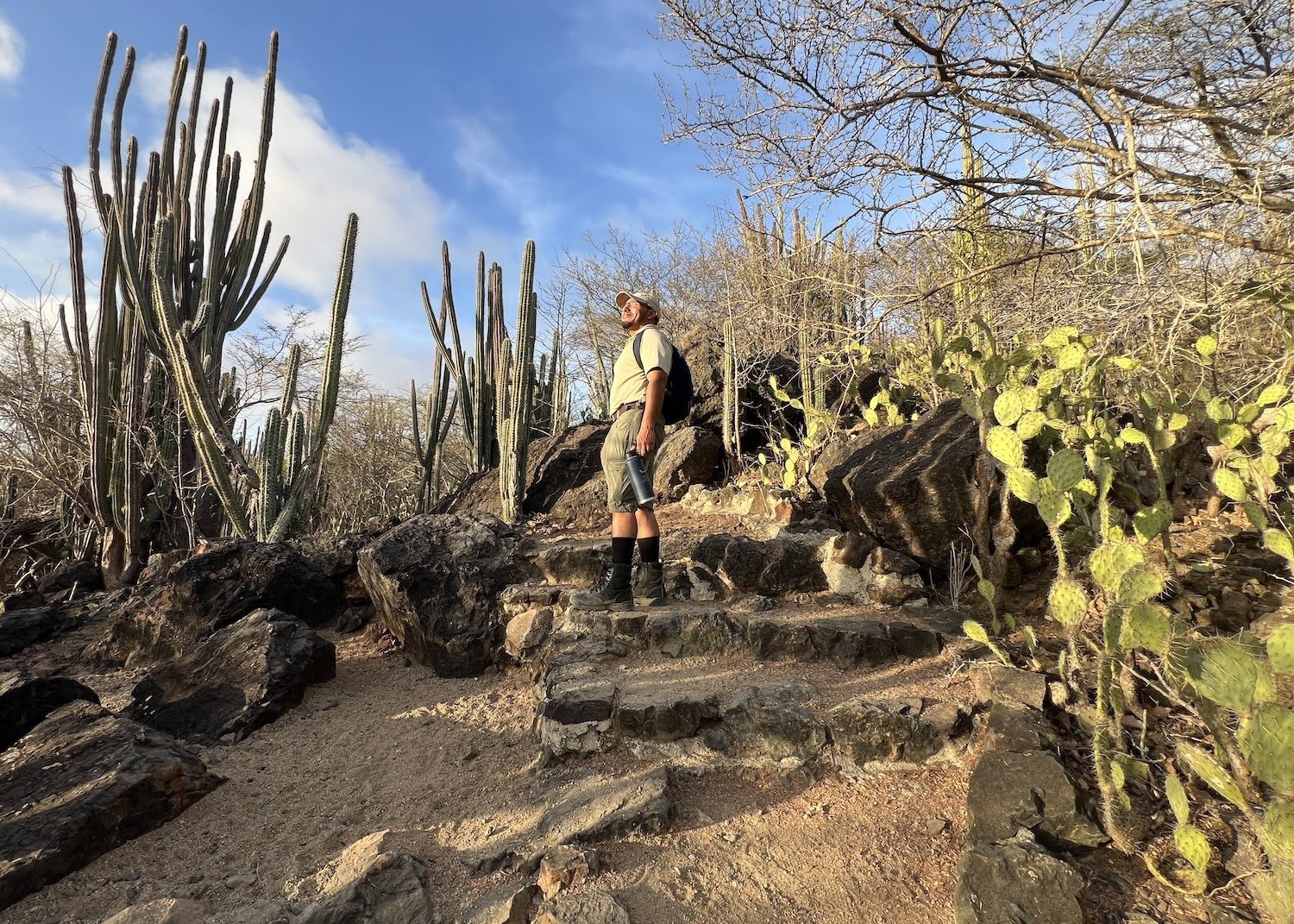
At a small, unnamed cave, we peer through a protective fence at a precious Caquetío Indian rock drawing of a bird, possibly a Ruby-topaz hummingbird, that serves as the park’s current logo.
It’s dusk and a bat colony is starting to leave its daytime roost to hunt for insects and water, but the nocturnal creatures are adept at flying around us.
We make our way through the cacti and back to the parking lot. After thanking the ranger for showing me more of Aruba’s wild side, it’s just a quick drive back to my Airbnb and new donkey friends.
Jennifer Bain
After a career at daily newspapers, Jennifer began travelling the world in search of quirk in 2018. She goes wherever the story is, but has a soft spot for Canada and has been to all 10 provinces and all three territories. Jennifer has won multiple awards and written two cookbooks and three travel books. She lives in Toronto but has a vacation house on Fogo Island, Newfoundland, which some cheekily say is one of the four corners of the supposedly flat earth.







